ספר הכללים במספר
Contents
- 1 Problems of Various Types
- 1.1 Find a Number Problem - Subtraction of Fractions
- 1.2 Find a Number Problem - Addition of Fractions
- 1.3 Find a Quantity Problem - Whole from Parts Problem - Lance
- 1.4 How Much Problem - Money
- 1.5 Find a Quantity Problem - First from Last Problem – Money
- 1.6 How Much Problem – Money
- 1.7 How Much Problem – Money
- 1.8 Pricing Problem - Find the Amount
- 1.9 Pricing Problem - Find the Price
- 1.10 Exchange Problem - Currencies
- 1.11 Motion Problem – Pursuit
- 1.12 Motion Problem – Encounter
- 1.13 How Many Problem - Group of People
- 1.14 Buy and Sell Problem
- 1.15 Boiling Problem
- 1.16 Partnership Problem - For the Same Time
- 1.17 Purchase Problem – Moneychanger
- 1.18 Payment Problem - Digging a Hole
- 1.19 Buy and Sell Problem
- 2 Exchange Problems
- 3 Interest and Pricing Problems
- 4 Problems of Various Types
- 4.1 Rent Problem
- 4.2 Exchange Problems
- 4.3 Proportions of Fractions
- 4.4 Find a Quantity Problem - Whole from Parts – Tree
- 4.5 Motion Problem - To and From - an Ant Climbing a Tower
- 4.6 Find a Quantity Problem - First from Last Problem – Money
- 4.7 Find a Quantity Problem - First from Last Problem – Money
- 4.8 Divide a Quantity – Money
- 4.9 Divide a Quantity – Money
- 4.10 Ordering Problem - Six Coins
- 4.11 Find a Number Problem - Ratio of Integers and Fractions
- 4.12 Multiple Quantities - Boys Selling Eggs
- 4.13 Find a Quantity Problem - Whole from Parts – Fish
- 4.14 Simultaneous Division - Money in a Purse
- 4.15 Partnership - for the same time
- 4.16 Give and Take Problem - gatekeeper
- 4.17 Shared Work Problem - Rivers Filling a Fountain
- 4.18 Motion Problem – Pursuit
- 4.19 Mixture and Alligation Problem - Goldsmith making rings from several kinds of coins
- 4.20 Divide a Quantity - Price of a Fish Paid by a Group of People
- 4.21 Joint Purchase Problem - If You Give Me - two men - Amounts of Money
- 4.22 Interest and Discount Problem - find the fund
- 4.23 Exchange Problems
- 4.24 Interest and Discount Problem
- 4.25 Pricing Problem - Find the Amount
- 4.26 Divide a Quantity - Sharing Food
- 4.27 Find a Number Problems - Multiplication of fractions
- 4.28 Multiple Quantities - Coins that Worth an Amount of Money
- 4.29 Find a Number Problems - Sums
- 4.30 Find a Number Problem - Multiplication of integers and fractions
- 4.31 Interest and Discount Problems
- 4.32 Multiple Quantities Problem - Five Weights
- 4.33 Guessing - coins
- 4.34 Payment Problem - three workers, three different daily wages, the same actual payment
- 4.35 Divide a Quantity Problem - Proportional Division – Inheritance
- 5 Geometrical Problems
- 6 Additional Problems
- 7 Apparatus
- 8 Appendix: Bibliography
Problems of Various Types |
||
| [Gold Weights: 1 kikkar = 100 liṭra; 1 liṭra = 20 dinar/zuz; 1 dinar/zuz = 12 pešiṭim/pešuṭim] | ||
Find a Number Problem - Subtraction of Fractions |
||
|
|
||
|---|---|---|
|
[1]א אם ישאלך אדם כמה הוא יותר השליש מן הרביע | |
|
אמור ג' פעמים ד' הם י"ב | |
|
השליש הוא ד' דנריצימו | |
|
הרביע הוא ג' דנריציסמו | |
|
נמצא שהשליש הוא יותר מן הרביע א' תריציסמו | |
|
וכן אם ישאלך כמה יותר הרביע מן החומש | |
|
תעשה כמו שעשינו למעלה ואמור ד' פעמים ה' הם כ' | |
|
הרביע הוא ה' בינטיני | |
|
החומש הוא ד' בינטיני | |
|
נמצא שהרביע הוא יותר מן החומש א' בינטינו | |
| Likewise for everything similar to it. | וכן כל הדומה לו | |
|
וכן אם ישאלך כמה הוא יותר השליש מן החמישית | |
|
אמור ג' פעמים ה' הם ט"ו | |
|
השליש הוא ה' קוויניציסמי | |
|
והחומש הוא ג' קוויניציס | |
|
נמצא שהשליש הוא יותר מן החומש ב' קוויניציסמו | |
Find a Number Problem - Addition of Fractions |
||
|
ב אם ישאלך אדם כמה הוא שליש פשוט ורביע וחומש ושתות ושביעית | |
|
תצטרך לחלק הפשוט לכל כך חלקי' שתמצא בו כל אלו השעורים | |
|
וכלך לדרך זו ואמור ג' פעמים ד' הם י"ב ה' פעמין י"ב הם ס' | |
|
| ||
|
השליש הוא תת"מ חלקי' | |
|
הרביע הוא תר"ל חלקי' | |
|
החומש הוא תק"ד חלקי' | |
|
השתות הוא ת"כ חלקי' | |
|
השבעית הוא ש"ס חלקי' | |
|
הרי שמן כולם הם אלפי' ותשנ"ד חלקי' | |
|
תוציא מהם אלפים ותק"כ חלקי' שהוא אחד שלם נשארו בידך רל"ד חלקי' | |
|
נמצא ששליש פשוט ורבע וחומש ושתות ושביעי הוא א' פשוט שלם ורל"ד חלקי' מפשוט אחד שתחלקהו לאלפי' ותק"כ חלקי' שהוא קי"ז חלקי' מאלף ור"ס וכה"ל | |
|
| ||
Find a Quantity Problem - Whole from Parts Problem - Lance |
||
|
ג שאלה רומח אחד שלישיתו במים ורביעיתו בעפר ולמעלה מן המים י' אמות כמה אמות כל הרומח | |
|
נבקש מניין שיש לו שלישית ורביעית והוא י"ב | |
|
ושלישיתו ורביעיתו מחוברים ז' | |
|
נחסרם מי"ב ישארו ה' | |
|
כפלנו הקצוות עלו ק"כ | |
|
חלקנום על ה' עלה כ"ד וזהו גבהות כל הרומח | |
|
שלישיתו ח' ורביעיתו ו' נחסרם מכ"ד ישארו י' שלמים בלי תוספת ומגרעת וכה"ל | |
How Much Problem - Money |
||
|
ד שאלה ממון חברנו חמישיתו ושביעיתו ותשיעיתו והיו י' כמה הממון | |
|
נבקש המורה והוא שט"ו והחלקי' ההם קמ"ג | |
|
כאשר החלק שט"ו של ה' יעלו ס"ג | |
|
וכשהחלק של ז' יעלו מ"ה | |
|
וכשהחלק של ט' יעלו ל"ה | |
|
חברם יחד יעלו קמ"ג | |
|
נכפול שט"ו על י' עלו ג' אלפי' וק"נ | |
|
חלקנום על קמ"ג עלו כ"ב שלמי' וד' חלקי' מן קמ"ג וככה הממון | |
|
קח חמישית כ"ב הם ד' נשאר ב' שהם ב' פעמי' קמ"ג והם רפ"ו | |
|
חבר עליהם ד' חלקי' הרי ר"צ | |
|
חלקם בה' יעלו נ"ח חלקי' מקמ"ג | |
|
|
||
|
וכן עשה מן התשיעית והשבעית ויעלו י' | |
|
|
||
|
עוד יש בו כלל אחר | |
|
שתאמר החלקי' שהוספת שהם י' הם קמ"ג והממון הראשון היה קע"ב | |
|
אמור אם קמ"ג שוים י' קע"ב כמה שוים | |
|
אמור י' פעמי' קע"ב הם אלף תש"כ חלקם על קמ"ג יבאו י"ב שלמי' וד' חלקי' מקמ"ג | |
|
חבר אליהם הי' יהיו כ"ב שלמי' וד' חלקי' מקמ"ג בלי תוספת ומגרעת | |
|
וכן כ.. מה הכלל ג"כ הוא טוב לדעת מדת הרומח הכתוב למעלה | |
Find a Quantity Problem - First from Last Problem – Money |
||
|
[2]ה נעשה להפך ממון חסרנו ממנו חמשיתו ושבעיתו ותשיעיתו ונשארו י' | |
|
נחסר קמ"ג שהם השברי' משט"ו שהוא המורה ישאר קע"ב | |
|
ונעשה כך כפלנו י' על שט"ו עלו ג' אלפי' וק"נ חלקנום על קע"ב עלו י"ח שלמי' ונ"ד חלקי' מקע"ב | |
|
לקחנו חמשית ושבעית ותשעית של זה המספר ישאר י' שלמי' | |
|
| ||
How Much Problem – Money |
||
|
ו שאלה ממון הוספנו עליו מחציתו ושלישיתו וחמישיתו וששיתו ובסך הכל היה מ' כמה היה הממון | |
|
ידענו כי החצי והשלישית והששית הוא אחד שלם ונחשוב כי היה אלו אחד הרי שנים יש לו תוספת החמישית | |
|
| ||
|
עתה יש לנו לחלק מ' על ב' וחמישית והעולה הוא הממון הנה נקח לכל אחד מן השלמים ה' ונשים עמהם החמשית יהיו אלף | |
How Much Problem – Money |
||
|
ז שאלה לקחנו חמישית ממון גם שביעיתו ותשיעיתו כמה הוא מערך הממון | |
|
נבקש המורה והוא שט"ו | |
|
ונחבר חמישית ושביעית ותשיעית יהיו קמ"ג | |
|
נחלקה על ל"ה והנה הם ד' תשעיות ונשארו ג' חלקי' מל"ה כי ל"ה הוא התשיעית וה' הוא שביעית התשיעית | |
|
| ||
Pricing Problem - Find the Amount |
||
|
ח שאלה אדם מוכר י"ג מדות בכ"ג כמה מדות יתן בז' פשוטי' | |
|
נאמר ז' פעמי' י"ג יהיו צ"א נחלקם על כ"ג בא ג' מדות וכ"ב מכ"ג חלקי' במדה אחת | |
Pricing Problem - Find the Price |
||
|
ועת' נהפוך חשבון שנבקש לדעת בכמה יתן לו ז' מדות | |
|
נאמר ז' פעמים כ"ג הם קס"א נחלקם על י"ז יהיו י"ב וה' חלקי' מי"ג בפשוט | |
Exchange Problem - Currencies |
||
|
וכן אם יאמר לך אדם אם ג' תרוביסים שוים ד' קורטונוס ה' תרוביסיט' כמה קורטונוס שוים | |
|
אמור ה' פעמי' ד' הם כ' חלקם על ג' בא ו' קורטוניס וב' שלשי' וכה"ל | |
Motion Problem – Pursuit |
||
|
ט שאלה אדם שלח רץ שילך בכל יום כ"ט מילים אחר מהלך י' ימי' שלח רץ אחר אחריו שילך בכל יום ל"ז מילי' | |
|
נכפול המילים שהלך בי' ימי' יהיו ר"צ נחלקם על היתרון שבין שני המהלכים שהוא ח' והנו ל"ו ימים ורבע יום | |
Motion Problem – Encounter |
||
|
י שאלה ראובן יצא מעירו ללכת לקראת שמעון לעירו בקר יום ראשון של ר"ח ובאותו יום עצמו יצא שמעון מעירו ללכת לעיר ראובן | |
|
ככה תעשה חבר שני המהלכי' הם ל"ו חלק עליו הק' מילים יהיו ב' ימים ישארו כ"ח חלקי' מל"ו ביום אחד שהם ז' תשעיו' יום | |
How Many Problem - Group of People |
||
|
יא שאלה אדם עבר על אנשים אמר להם שלו' לכם מאה איש | |
|
והנה נקח למספרם אחד ואחד כמונו והנה שנים ומחציתנו חצי אחד הנה שנים וחצי נוסיף רבעיתו יהיו [3]ג' רבעיות | |
|
ובעבור שיש לנו רבעית נקח לכל שלם ד' ויהיו ח' נחבר אליהם הג' רבעים יהיו י"א | |
|
| ||
|
ובעבור שאמרו שיהיו עמו מאה יהיה מספרם עם התוספת צ"ט | |
|
נשיבם מהדרך הד' יהיו שצ"ו | |
|
נחלקם על י"א יהיו ל"ו וככה מספרם | |
Buy and Sell Problem |
||
|
יב שאלה אדם קנה בק' זהובים ק' ליט' אחרי כן מכר הנ' ליט' ורבע ליט' בזהוב והנ' ליט' מכר ליט' פחות רבע ליט' בזהוב | |
|
נשיב הנ' ראשונים ר' כי רבעים הם נחלקם על ה' כי ליט' ורבע ליט' מכר בזהוב יהיו מ' זהובי' | |
|
גם נכפול הנ' אחרים על ד' יהיו ר' נחלקם על ג' כי ג' רבעים מכר בזהוב והנה יהיו ס"ו זהובים ושני שלישי זהוב | |
|
וחבר אליהם המ' יהיה הריוח ו' זהובים ושני שלישי זהוב וכה"ל | |
|
| ||
Boiling Problem |
||
|
יג שאלה אדם היו לו י' מדות משמש ורוצה לבשלם עד שלא ישאר כי אם השלישית והנה החל לבשל עד שנשארו מהם ח' מדות | |
|
ועתה יש לך ג' מספרים ידועים | |
|
האחד שליש י' והוא ג' ושליש | |
|
והשני ח' הם המדות שנתבשלו | |
|
והשלישי ו' שנשארו מן הנשפך | |
|
והנה נכפול ו' על ג' ושליש יהיו כ' וחלקם על ח' יהיו ב' וחצי | |
Partnership Problem - For the Same Time |
||
|
יד שאלה ד' אנשים יש לאחד מהם י"א דינרי' ולשני י"ג די' ולשלישי ט"ו דינרי' ולרבעי י"ז דינרי' והרויחו י"ט דינרי' | |
|
נחבר ראשי' כל ד' ממונם ויהיו נ"ו | |
|
ובערך כל אחד אל נ"ו ככה יקח מי"ט | |
|
ונעשה כך נכפול י"א על י"ט יעלו ר"ט נחלק על נ"ו יעלו ג' שלמי' ומ"א חלקי' | |
|
עשינו כן בי"ג עלו רמ"ז חלקנום על נ"ו עלו ד' שלמי' וכ"ג חלקי' | |
|
עשינו כן בט"ו יהיו רפ"ה חלקנום על נ"ו עלו ה' שלמי' וה' חלקי' | |
|
עשינו כן בי"ז עלו שכ"ג חלקנום על נ"ו עלו ה' שלמי' ומ"ג חלקי' | |
|
חברנו אלו השלמי' ואלו החלקי' עלו י"ט שלמי' כי החלקי' האלו חלקי נ"ו הם | |
Purchase Problem – Moneychanger |
||
|
טו שאלה יש אצל המחליף ג' מטבעים והזהוב שוה ממטבע אחד ג' דינרי ומן השני ד' ומן השלישי ו' ובא אדם אחד ובקש למחליף שיתן לו מג' המטבעים בזהוב ויהיה המספר שוה מן היקרים כמו משאינם יקרים | |
|
בקש היתרה שיהיה בו שלישית ורבעית וששית והוא י"ב | |
|
החלקי' הם ט' והוא דינר | |
|
נחלק המורה על זה המספר יהיו י"ב תשי' וככה לקח מכל מטבע | |
|
אחר על זאת השאלה שתאמר מה ערך י"ב אל ט' והיה כמות שלישיתו והנה נוסיף על י"ב ד' יהיו י"ו | |
Payment Problem - Digging a Hole |
||
|
יו שאלה ראובן שכר שמעון שיחפור לו בקרקע ז' באורך וו' ברוחב וה' בעומק ויתן לו י"א פשיטי' והוא חפר ו' באורך ה' ברוחב ד' בעומק | |
|
נעשה כך ז' פעמים ו' הם מ"ב כפלם על ה' שהוא העומק ויהיו ר"י | |
|
גם נכפול המספר השני שהוא ו' על ה' והם ל' גם נכפול זה על ד' שהוא העומק יהיו ק"כ | |
|
ונכפול י"א פעמי' [4]ק"כ הם אלף וש"כ חלקם על ר"י עלו ו' שלמי' ונשאר ס' שהם ב' שבעיות פשוט וכה"ל | |
Buy and Sell Problem |
||
|
יז שאלה אדם קנה ג' חמשיות ליט' בפשוט ומכר ד' שבעיות ליט' בפשוט והרויח פשוט כמה היה ממונו | |
|
בקש המורה הוא ל"ה וכפול ה' על ז' | |
|
והיה ג' חמשיותיו כ"א | |
|
וד' שבעיותיו כ' והממון היה כ' וכה"ל | |
|
נראה שרוצה לו' שהוצ' כ' פשוטי' וזהו | |
|
יח שאלה אדם קנה ד' שבעיות ליט' בפשוט ומכר ה' תשעיות ליט' בפשוט והרויח פשוט כמה היה הממון | |
|
ידוע הוא כי ד' שבעיות אחד הוא יותר מה' תשעיות אחד | |
|
והנה המורה ס"ג | |
|
וה' תשיעיותיו ל"ה | |
|
וד' שבעיותיו ל"ו | |
|
ותוכל לבחון זה כי אחר שקנה ד' שבעיות ליט' בפשוט ממונו ל"ה הנה יש לו כ' ליט' | |
|
עשה מהם תשעיו' יהיו ק"פ | |
|
חלק זה המספר על ה' כי ה' תשעיו' מכר בפשוט יעלו בידך ל"ו | |
|
ואילו אמר כי הרויח ב"פ | |
|
כפלם על ל"ה יהיו הפשוטי' שהוציא | |
|
|
כי הממון יהיה מ' ליט' | |
|
ואם אמר ג"פ | |
|
יכפלם על ל"ה | |
|
וככה עד סוף החשבון | |
Exchange Problems |
||
|
יט כלל כל החשבונות הוא על שלשה פנים במדה או במשקל או במספר | |
|
על כן נאמר הריגולי' הנאותים לשלשתם | |
|
אם ישאל לך שום חשבון שיהיה בו אחד מאלו הג' מינים נרבה אותו הדבר שנרצה לידע כנגד אותה שאיננה ממינה עצמה ממש | |
|
המשל בזה אם ז' פיסט' שוים ט' קורטוניס כמה ישוו ק' ליט' מפיסני' לקורטו' | |
|
כבר ידעת כי הקורטו' הוא הדבר שאינה ממינה עצמה ממש לכן נרבה ט' פעמי' ק' יהיו תת"ק | |
|
וחלקם על ז' קכ"ח ליט' וי"א דינרי' והם וכך ישוו הק' ליט' מפיסני' לקורטו' | |
|
ודע כי אם ז' פיסני' שוים ט' קורטו' הז' דינרי' פיסני' שוים ט' דינרי' קורטוני' והז' ליט' מפיסני' שוים ט' ליט' קורטו' ות"ש ליט' מפיסני' שוים תת"ק ליט' קורטו' | |
| וכן יבא בין פפריני' ופריביסיני' ולכל [חשבון] כזה | ||
|
כ אם ישאל לך חשבון שיהיה בו מאלו הג' מינים ולפני הב' חלקי' יהיו שבורים נדע באיזה המספר ימצאו אלו השבורים | |
|
| ||
|
כא ואם נשאל לך חשבון אחר שיהיה שבור מחלק אחד נרבה הב' חלקי' באותו המספר דהיינו עם אותו השבור | |
|
| ||
| Example for the two cases: | ונשים המשל בשני פנים האחד בעבור החשבון שהוא שבור מחלק אחד והאחר שהוא שבור מב' חלקי' | |
|
אם ה' פיסני' ורביע שוים ז' קורטוט' כמה ישוו אלף ליט' מפיסני' | |
|
וזה החשבון הוא שבור מחלק אחד וזה השיבור הוא הרביע לכן נרבה הב' חלקי' עם ד' | |
|
|
ואמור ד' פעמי' ה' פיסני' ורביע יבוא כ"א פיסני' | |
|
|
וד' פעמי' ז' קורטו' בא כ"ח קורטו' | |
|
הרי שכ"א פיסני' שוים כ"ח קורטו' | |
|
ונחלק לשביע בעבור [5]שבשני החלקי' ימצא שביע | |
|
|
השביע מכ"א הוא ג' | |
|
|
השביע מכ"ח הוא ד' | |
|
נמצא שג' פיסני' שוים ד' קורטו' | |
|
ואנחנו נרצה לידע כמה ישוו אלף ליט' מפיסני' הפיסני הוא הדבר שנרצה לידע והקורטו' הוא הדבר שאנינה ממינה עצמה | |
|
לכן נרבה ד' פעמים אלף יבא ד' אלפי' מקורטו' ונחלק בג' שיבא אלף ושל"ג ליט' וו' דינרי' וח"פ וכן ישוו אלף ליט' מפיסני לקורטוט' | |
|
ונשים המשל אל החשבון שהוא שבור מב' חלקיו אם ז' אונקיו' ושליש כסף שוים ע"ג ליט' וה' דינרי' מפיסני' כמה ישוו הי"ט אונקיו' כסף לפי זה החשבון | |
|
ואלו השבורים הם שליש ורביע אנה ימצאו בי"ב לכן יש לנו לרבות הב' חלקי' בי"ב | |
|
|
ואמור י"ב פעמי' ז' אונקיו' ושליש יבא פ"ח אונקיו' כסף | |
|
|
וי"ב פעמי' ע"ג ליט' וה' דינרי' יהיו תתע"ט ליט' מפסני' | |
|
הרי שפ"ח אונקיות כסף שוים תתע"ט ליט' | |
|
ונרצה לידע כמה ישוו הי"ט אונקיו' כסף | |
|
נרבה י"ט פעמי' תתע"ט ליט' יהיו י"ו אלפי' ותש"א חלקם בפ"ח יבא קפ"ט ליט' וט"ו די' וח"פ וב' חלקי' מי"א וכן ישוו הי"ט אונקיו' כסף באותו החשבון | |
Interest and Pricing Problems |
|||||||||||
| Find the Time | |||||||||||
|
כב שאלה הככר ירויח השנה ל"ו ליט' וי"ח די' נוסף הס"ה ליט' בכמה זמן ירויחו כהם | ||||||||||
|
תרבה הק' ליט' כנגד י"ב חדשי השנה ואמור י"ב פעמי' ק' חדשים הם אלף ור' | ||||||||||
|
חלקם על ס"ה יבא לכל חלק י"ח חדשי' וי"ג ימים וי"א חלקי' מי"ג חלקי' ביום | ||||||||||
|
נמצא שבי"ח חדשי' וי"ג ימי' וי"א חלקי' מי"ג ביום ירויחו ס"ה ליט' כלכך כמו שירויח הככר השנה | ||||||||||
| Find the Earned Interest | |||||||||||
|
כג שאלה אם יאמר אדם הלותי מעות לחשבון גפה"ח הליט' החדש כמה יבואו הס' ליט' ח' חדשים | ||||||||||
|
תרבה מעות הרבית עם החדשים ואמור ג' פעמי' ח' כ"ד שהם ב' דינרי' | ||||||||||
|
אחר כן תרבה אלו הב' די' עם הס' ליט' ואמור ס' פעמי' ב' דינרי' הם ק"כ די' שהם ו' ליט' | ||||||||||
|
נמצא שבס' ליט' לחשבון גפה"ח יבוא ו' ליט' לח' חדשים וכה"ל | ||||||||||
| Find the Fund | |||||||||||
|
כד אם ישאלך אדם הלותי מעות הליט' לחשבון כך וכך החדש כמה ליט' ירויחו היום א"פ | ||||||||||
|
נחלק ל' ליט' בכל כך חלקי' כמו המעות שירויח הליט' החדש | ||||||||||
|
המשל בזה הרי שהלותי הליט' בב' פשוטי' וחצי החדש ותרצה לידע כמה ליט' ירויחו היום א"פ | ||||||||||
|
נחלק ל' ליט' בב' וחצי שיבוא י"ב ליט' | ||||||||||
|
נמצא שבי"ב ליט' ירויחו היום א"פ וכה"ל | ||||||||||
| Find the Time | |||||||||||
|
כה אם ישאלך אדם הלותי הליט' לחשבון כך וכך החודש בכמה ימים ירויח הליט' א"פ | ||||||||||
|
חלק ל' יום בכל כך חלקי' כמו המעות שירויח הליט' החדש | ||||||||||
|
המשל בזה הרי שהלוית לחשבון ג' ותרצה לידע כמה ימים ירויח הליט' א"פ | ||||||||||
|
חלק ל' יום בג' חלקי' שיבוא י' ימים | ||||||||||
|
הרי שבי' ימים ירויח הליט' א"פ | ||||||||||
| Find the Fund | |||||||||||
|
כו אם ישאלך אדם הככר ירויח כל השנה כל כך ליט' כמה ליט' ירויחו היום א"פ | ||||||||||
|
חלק ק"נ ליט' בכל כך חלקי' כמו הליט' שירויח הככר השנה | ||||||||||
|
המשל בזה הככר ירויח י"ב ליט' השנה ותרצה לידע כמה ליט' ירויחו היום א"פ | ||||||||||
|
חלק ק"נ ליט' בי"ב חלקי' שיבוא [6]י"ב וחצי | ||||||||||
|
הרי שבי"ב ליט' וחצי ירויחו ביום א"פ וכה"ל | ||||||||||
| Find the Time | |||||||||||
|
כז) אם ישאלך אדם הככר ירויח כל כך ליט' השנה בכמה ימים ירויח הליט' אח' | ||||||||||
|
חלק ק"נ ימים בכל כך חלקי' כמו הליט' שירויח הככר השנה | ||||||||||
|
המשל בזה הככר ירויח ט' ליט' השנה ותרצה לידע בכמה ימים ירויח הליט' אח' | ||||||||||
|
חלק ק"נ ימים בט' חלקי' שיבואו י"ו ימים וב' שלשי הרי שבי"ו ימים וב' שלישי ירויח הליט' אח' וכה | ||||||||||
| Find the Time | |||||||||||
|
כח) אם ישאלך אדם כל כך ליט' ירויחו כל כך בכל כך זמן כמה ליט' כמה כל כך ליט' בכל כך זמן בכמה זמן ירויחו כהם או בכל חדשים כמה ליט' ירויחו כל | ||||||||||
|
תרבה סכום הליט' כנגד סכום החדשים וחלק בכל כך חלקי' כמו שהם ליט' או חדשים | ||||||||||
|
המשל בזה נ' ליט' ירויחו ג' ליט' בד' חדשים הע"ה ליט' בכמה זמן ירויחו כהם | ||||||||||
|
הרבה סכום הליט' כנגד סכום החדשים ואמור נ' פעמי' ד' חדשים יבא ר' חדשים וחלקם בע"ה יבא ב' חדשים וכ' ימים נמצא שבב' חדשי' וב' ימים ירויחו הע"ה ליט' כל כך כמו הנ' ליט' ד' חדשים וכה | ||||||||||
| Find the Fund | |||||||||||
|
כט) אם ישאלך אדם כל כך ליט' ירויחו בכל כך זמן כל כך ליט' כמה ליט' בכל כך זמן ירויחו כהם | ||||||||||
|
תרבה סכום החדשים כנגד סכום הליט' וחלקם בכל כך חלקי' כמו החדשי' או הליט' שנרצה לידע | ||||||||||
|
המשל בזה כ"ה ליט' ירויחו בו' חדשי' מ' דינרי' כמה ליט' ירויחו בהם בח' חדשים | ||||||||||
|
תרבה סכום החדשים כנגד סכום הליט' ואמור ו' פעמי' כ"ה ליט' יבא ק"נ ליט' חלקם בח' חלקי' יבא י"ח ליט' וט"ו דינרי' | ||||||||||
| Find the Time | |||||||||||
|
ל) אם ישאלך אדם הלותי הליט' בכך וכך החדש כל כך ליט' בכמה זמן יכפלו בלתי לשים ריוח אקרן | ||||||||||
|
חלק כ' שנים בכל כך חלקי' כמו המעות שירויח הליט' החדש | ||||||||||
|
המשל בזה הלותי הליט' בגפ"ה הצ"ה ליט' בכמה זמן יכפלו | ||||||||||
|
חלק כ' שנים בג' חלקי' שיבא ו' שנים וח' חדשי' נמצא שבו' שנים וח' חדשים יכפלו הצ"ה ליט' | ||||||||||
| Find the Time | |||||||||||
|
לא) אם ישאלך אדם הככר ירויח השנה כל כך ליט'
כל כך ליט' בכמה זמן יכפלו בלתי לשים ריוח אקרן | ||||||||||
|
חלק ק' שנים בכל כך חלקי' כמו הליט' שירויח הככר | ||||||||||
|
המשל בזה הככר ירויח ח' ליט' השנה המ"ה ליט' בכמה זמן יכפלו | ||||||||||
|
חלק ק' שנים בח' חלקי' שיבא י"ב שנים וחצי נמצא שבי"ב שנים וחצי יכפלו המ"ה ליט' | ||||||||||
| Pricing Problem - Find the Price | |||||||||||
|
לב) אם ישאלך אדם הקנטרו' מן המוך שוה י"ז ליט' וה' דינרי' כמה ישוה הליט' | ||||||||||
|
חלק אלו הי"ז ליט' וה' דינרי' בג' חלקי' שיבא לכל חלק ה' ליט' וט"ו די' אחרי כן חלק אלו הה' ליט' וט"ו די' בה' חלקי' שיבא לכל חלק כ"ג דינרי' | ||||||||||
|
|
יסוד זה החשבון הוא כי הם ט"ו וי"א פעמי' ט"ו הם קס"ה א"כ בחלק הזמן | ||||||||||
| Find the Earned Interest | |||||||||||
|
לג) אם ישאלך אדם כל כך ליט' ירויחו היום אח' לאי זה חשבון יבא החדש הליט' | ||||||||||
|
חלק ליט' בכל כך חלקי' כמו הליט' שירויחו היום אח' | ||||||||||
|
המשל בזה י"ב ליט' ירויחו היום א"פ ותרצה לידע לאי זה חשבון יבא החדש הליט' | ||||||||||
|
חלק ל"פ בי"ב חלקי' שיבא ב"פ וחצי נמצא שיצא החדש הליט' ב"פ וחצי וכה | ||||||||||
|
לד) אם ישאלך אדם כל כך ליט' ירויחו היום א"פ כמה ליט' ירויחו ק' ליט' א' שנה | ||||||||||
|
|
חלק ק"נ בכל כך חלקי' כמו הליט' שירויחו היום א"פ | ||||||||||
|
המשל בזה ט"ו ליט' ירויחו היום א"פ כמה ירויחו ק' ליט' א' שנה' | ||||||||||
|
חלק ק"נ ליט' בט"ו חלקי' שיבא י' ליט' נמצא שק' ליט' ירויחו א' שנה י' ליט' | ||||||||||
|
לה) אם ישאלך אדם הככר ירויח השנה כ"ט ליט' וי"ג דינרי' וז"פ כמה ליט' ירויחו בהם ז' חדשי' | ||||||||||
|
תרבה חדשי השנה עם סכום הליט' דהיינו ק' ליט' וחלקם בכל כך חלקי' כמו החדשי' שנרצה לידע דהיינו הז' חדשים | ||||||||||
| Find the Time | |||||||||||
|
לו) אי"א הככר ירויח כ"כ ליט' השנה בכמה זמן יכפלו בלתי לשים ריוח אקרן | ||||||||||
|
|
חלק ק' שנים בכל כך חלקי' כמו הליט' שירויח הככר השנה | ||||||||||
|
המשל בזה הככר ירויח י"ד ליט' השנה ותרצה לידע בכמה זמן יכפלו | ||||||||||
|
חלק ק' שנים בי"ד חלקי' שיבא ז' שנים וא' חדש וכ"א ימים וג' חלקי' מז' ביום נמצא שבז' שנים וא' חדש וכ"א ימים וג' חלקי' מז' ביום יכפלו | ||||||||||
|
לז) אי"א הלויתי הליט' לחשבון ב"פ וחצי החדש בכמה זמן יכפלו בלתי לשים רבית אקרן | ||||||||||
|
|
חלק כ' שנים בכל כך חלקים כמו המעות שירויח הליט' החדש המ"ב | ||||||||||
|
הלותי כ' דינרי' לחשבון ב"פ וחצי החדש הליט' ותרצה לידע בכמה זמן יכפלו | ||||||||||
|
חלק כ' שני' בב' וחצי שיבא ח' שני' נמצא שבח' שנים יכפלו וכה | ||||||||||
| Find the Earned Interest | |||||||||||
|
לח) אם ישאלך אדם הככר ירויח כ"כ ליט' השנה כמה ליט' ירויחו היום א"פ | ||||||||||
|
|
חלק ק"נ ליט' בכל כך חלקי' | ||||||||||
|
כמו הליט' שירויחו הככר השנה הב' הככר ירויח י"ג ליט' השנה ותרצה לידע כמה ליט' ירויחו היום א"פ | ||||||||||
|
חלק ק"נ ליט' בי"ג חלקי' שיבא י"א ליט' וי' די' וט"פ וג' חלקי' מי"ג בפשוט וכל כך מעות ירויחו היום א"פ | ||||||||||
|
לט) אי"א הלותי הליט' החדש לחשבון כך וכך כמה ירויחו היום ק' ליט' | ||||||||||
|
תרבה ג' ושליש כנגד מעות הרבית | ||||||||||
|
המשל בזה הלותי הליט' לחשבון ג"פ החדש ותרצה לידע כמה ירויחו היום ק' ליט' | ||||||||||
|
תרבה ג' ושליש עם ג' ואמור ג' פעמי' ושליש ג' י"פ נמצא שק' ליט' ירויחו היום י"פ וכה | ||||||||||
|
מ) אם ישאלך אדם הככר ירויח כ"כ פשוטי' היום כמה ירויח הככר השנה | ||||||||||
|
|
תרבה א' וחצי עם המעות שירויח הככר היום | ||||||||||
|
המשל בזה הככר ירויח היום י"פ ותרצה לידע כמה יבוא השנה | ||||||||||
|
תרבה א' וחצי עם י' ואמור א' וחצי פעמי' י' ליט' יבא ט"ו ליט' נמצא שירויח הככר ט"ו ליט' השנה | ||||||||||
|
מא) אם ישאלך אדם הככר ירויח היום כ"כ פשוטי' כמה יבא החדש הליט' | ||||||||||
|
|
חלק בג' ושליש מ"א המעות שירויח הככר היום | ||||||||||
|
המשל בזה הככר ירויח היום י"פ ותרצה לידע כמה יבא החדש הליט' | ||||||||||
|
חלק י"פ בג' ושליש יבא ג"פ נמצא שיבא לחשבון גפה"ה וכה"ל | ||||||||||
|
מב) אי"א הככר ירויח כל כך ליט' השנה כמה יבא החדש הליט' | ||||||||||
|
|
חלק לחומש הליט' שירויח הככר השנה ותחשבם פשוט' | ||||||||||
|
המשל בזה הככר ירויח י"ב ליט' השנה ותרצה לידע כמה יבא החדש הליט' | ||||||||||
|
חלק י"ב ליט' ה' לחומש ותחשבם פשוטי' שיבא ב"פ וב' חמשי פשוט נמצא שיבא החדש הליט' ב"פ וב' חמשי' וכה"ל | ||||||||||
|
מג) אם תלוה ק' ליט' א' חדש לחשבון ח' ליט' השנה ותרצה לידע כמה יבא בדרך קצרה | ||||||||||
|
|
כלך לדרך זו ואמור אם היית מלוה אותם א' חדש לחשבון ח' ליט' השנה | ||||||||||
|
היה עולה הריוח ק' פשוטי' שהם ח' די' וד"פ שיבא לכל ליט' א"פ בחדש | ||||||||||
|
וכשאתה מוסיף עוד ח' ליט' הרי שעולה הריוח בכל ליט' בא' חדש א' פשוט וג' חמשי פשוט | ||||||||||
|
שיבא הככר ק' פשוטי' וס' חומשי פשוט שהוא סך הכל י"ג די' וד"פ וכך יבא הככר החדש | ||||||||||
|
| |||||||||||
|
ולחש' ז' ליט' השנה | ||||||||||
|
יבא לכל ליט' א"פ וב' חומשי פשוט בחדש | ||||||||||
|
שיבא הככר בחדש י"ב די' פד"פ [פחות ד' פשוטי'] וכה"ל | ||||||||||
|
אחר על זאת השאלה הכתובה למעלה | ||||||||||
|
אם תלוה ק' ליט' א' חדש לחשבון ח' ליט' השנה ותרצה לידע כמה יבא בדרך קצרה | ||||||||||
|
|
כלך לדרך זו ואמור אם היית מלוה ק' ליט' א' חדש לחשבון כ' די' השנה | ||||||||||
|
יבא החדש כ"פ שהם ה' ידות [שלישיון דינר] | ||||||||||
|
ואמור ה' פעמי' ח' ידות [ח' לי'] הם מ' ידות [שלישיון] שהם י"ג די' וד"פ | ||||||||||
|
ולחשבון זה תאמ' ג"כ ה' פעמי' ז' ידות הם ל"ה ידות שהם י"ב די' פחות ד"פ וכה"ל | ||||||||||
| Find the Interest | |||||||||||
|
מד) אם ישאלך אדם הלותי כ' די' שנה אחת לחש' דפ"ה ובסוף השנה פרעתי מהם קצת הלותים שנה שניה לחשבון דפ"ה כמו כן ופרעתי מהם קצת | ||||||||||
|
| |||||||||||
|
עלו כל הפרעונות כ"ח דינרי' וה' פשו' וע"ג חלקי' מצ"א בפשוט | ||||||||||
|
שיבא לכל פרעון ט' די' וה' פשוטי' ופ"ה חלקי' מצ"א | ||||||||||
|
ודרך עשיית החשבון הוא על זה הדרך שתתפוש החשבון אחר ותשים קצת הפרעון שבכל שנה ושנה ו' די' | ||||||||||
|
ותתפוש החשבון מסופו דהיינו שבסוף שנה שלישית נשארו ו' דינרי' | ||||||||||
|
ונרצה לדעת כמה נשארו בראש שנה שלישית שהוא סוף שנה שנייה אמור אם בסוף שנה שלישית נשארו ו' דינרי' הסר מהם השתות והנשאר הוא הקרן שנשאר בסוף שנה שנייה | ||||||||||
|
ואז פרעת ו' די' עבור שנה שנייה הרי שבסוף שנה שנייה היו י"א | ||||||||||
|
הסר מהם השתות שהוא הריוח שעלה בהם בשנה שנייה נשארו ט' די' וב"פ | ||||||||||
|
ואז פרעת ו' די' בעבור שנה ראשונה הרי שבסוף שנה ראשונה היו ט"ו די' וב"פ | ||||||||||
|
הסר מהם השתות ישארו י"ב די' וז"פ וב' שלישי פשוט | ||||||||||
|
אם כן ידענו שאם הקרן הוא י"ב די' וז"פ וב' שלישי פשוט הפרעון הוא ו' די' בכל שנה ונרצה לידע אם הקרן הוא כ' די' כמה הוא הפרעון | ||||||||||
|
עשהו בדרך זה אם ג' שוה ד' ה' כמה שוה והבן זה כי עמוק הוא וכה"ל | ||||||||||
|
גם נוכל לעשותו בדרך אחרת | ||||||||||
|
|
ותאמר א"פ וב' שלשיות כמה חלק הוא מי"ב די' וז"פ וב' שלישיות הוא חלק אחד מצ"א | ||||||||||
|
אם תסירהו מן הקרן ישארו י"ב די' וחצי | ||||||||||
|
תסיר ממנו עוד מן הנשאר החומש ישארו י' די' | ||||||||||
|
כפלהו יעלה כ' די' | ||||||||||
|
וכן תעשה בפרעון תסיר מו' די' חלק אחד מצ"א אחרי כן תסיר מן הנשאר החומש ותכפול המותר | ||||||||||
| Pricing Problem - Find the Price | |||||||||||
|
מה) פרי שקנית תגרות בכל כך ליט' הככר ותרצה לידע כמה יבא הליט' התגרות בדרך קצרה | ||||||||||
|
|
תפוש החומש מסכום החשבון המעות וד' חומשי' תשליך ומכל ליט' שנשאר בידך קח די' וכל כך מעות יבא הליט' מן התגרות | ||||||||||
|
המשל בזה הרי שקניתי ק' ליט' מפלפל לחשבון מ' ליט' ותרצה לידע כמה יבא הליט' | ||||||||||
|
תפוש החומש שהם ח' ליט' ומכל ה' ליט' תקח די' הרי שיבא ח' די' הרי שיבא הליט' מן הפלפל ח' די' | ||||||||||
|
וה"ל אחר שבכל ליט' ממעות שהוציא בככר אחד מן התגרות יגיע לכל ליט' ב"פ וב' חמשי' | ||||||||||
|
והרי שקנית הככר מן התגרות במ' ליט' ותרצה לידע כמה יבא הליט' | ||||||||||
|
תאמר ב"פ מ"פ וב' פעמי' מ' חומשי פשוט הם ח' די' וכה"ל | ||||||||||
| Find the Earned Interest | |||||||||||
|
מו) אם ישאלך אדם כמה יעלה הריוח מק' ליט' א' יום לחשבון ח' ליט' השנה | ||||||||||
|
תאמר ב' פעמי' ח' הם י"ו תפוש השליש בפרוטות שהם ה"פ ושליש וכן יבא וכה"ל | ||||||||||
Problems of Various Types |
|||||||||||
Rent Problem |
|||||||||||
|
מז) אם תשכיר בית אחד לחשבון כך וכך ליט' השנה ותרצה לידע כמה יבא היום | ||||||||||
|
עשה כן מכל ליט' שתוציא בבית השנה יבא ליום ב' שלישי פשוט | ||||||||||
|
והרי שהשכרת בית אחד לחשבון כ' ליט' השנה | ||||||||||
|
תאמ' כ' פעמי' ב שלשיים הם מ' שהם י"ג פשו' ושלי' וכן יבא לזו | ||||||||||
Exchange Problems |
|||||||||||
|
מח) אם ישאלך אדם הכ"ב פיסני שוים כ"ה בולייניני' כמה יתן חלוף הליט' מן הבולונייני' לליט' מן הפיסני' | ||||||||||
|
תרבה כ"ה פעמי' א' ליט' מבולנייני' יהיו כ"ה ליט' מבולנייני' חלקם על כ"ב יבא כ' די' וח"פ ח' חלקי' מי"א בפשוט | ||||||||||
Proportions of Fractions |
|||||||||||
|
מט) אם שליש שוה רביע חומש כמה שוה | ||||||||||
|
אמור תחלה אנה ימצאו שליש ורביע וחומש אמור ג' פעמי' ד' י"ב | ||||||||||
|
|
השליש הוא כ' | ||||||||||
|
|
הרביע הוא ט"ו | ||||||||||
|
|
החומש הוא י"ב | ||||||||||
|
ואמור אם כ' שוה ט"ו י"ב כמה שוה | ||||||||||
|
|
אמור י"ב פעמי' ט"ו הם ק"פ חלקם בכ' חלקי' הרי שיבא ט' שהם ט' חלקי' מס' | ||||||||||
Find a Quantity Problem - Whole from Parts – Tree |
|||||||||||
|
נ) אם ישאלך אדם יש לי אי אילן שהחצי והשליש ממנו הוא עומד במים תחת הארץ והשליש והרבע מן הנשאר הוא מכוסה תקוע בארץ | ||||||||||
|
בקש המורה והוא ע"ב בכפלך ג' על ב' והם ו' וג' פעמי' ו' הם י"ח וד' פעמי' י"ח הם ע"ב | ||||||||||
|
ובע"ב תמצא חצי ושליש ושליש ורבע | ||||||||||
|
והוצא שליש וחצי מע"ב והם ס' וישארו י"ב | ||||||||||
|
א"כ בעבור החלק האחד שהוא בארץ הוצא השליש והרבע מי"ב והם ז' | ||||||||||
|
ועתה אסוף ז' עם ס' והם ס"ז וישארו ה' | ||||||||||
|
אם כן עשה אם ה' היו ג' ע"ב כמה היו | ||||||||||
|
ע"ב פעמי' ג' הם רי"ו | ||||||||||
|
חלקם בה' בא מ"ג וחומש | ||||||||||
|
א"כ אורך כל האילן היה מ"ג זרתות וחומש | ||||||||||
| וכה | |||||||||||
Motion Problem - To and From - an Ant Climbing a Tower |
|||||||||||
|
נא) הרי שיש לפניך מגדל גבוה כ' אמה ונמלה אחת רוצה לעלות למעלה | ||||||||||
|
|
אמור תחלה כמה יותר השליש מן הרביע א' חלק מי"ב | ||||||||||
|
נמצא שבכל יום יש לה יתרון א' חלק מי"ב מן האמה | ||||||||||
|
הרי שבי"ב ימים היא עולה אמה אחת | ||||||||||
|
אמור י"ב פעמים כ' בעבור המגדל שגובהו כ' הרי ר"מ הרי שבר"מ ימים תעלה על המגדל | ||||||||||
Find a Quantity Problem - First from Last Problem – Money |
|||||||||||
|
נב) הרי שיש לך מעות בכיס והוצאת מהם השליש והרביע והחומש והם ט' | ||||||||||
|
אמור תחלה אנה ימצאו שליש ורביע וחומש בס' | ||||||||||
|
|
השליש הוא כ' | ||||||||||
|
|
והרביע ט"ו | ||||||||||
|
|
והחומש י"ב | ||||||||||
|
|
וכללם מ"ז חלקי' מס' | ||||||||||
|
|
נמצא שהנשארי' הם י"ג חלקי' מס' | ||||||||||
|
ואמור אם מ"ז חלקי' מס' שוים ט' פשוט י"ג חלקי' מס' כמה יבואו | ||||||||||
|
|
אמור י"ג פעמי' ט' הם קי"ז חלקם במ"ז בא ב' וכ"ג חלקי' ממ"ז | ||||||||||
|
נמצא שהיו בתוך הכיס י"א וכ"ג חלקי' ממ"ז | ||||||||||
|
ומה שהוציא היו ט' ומה שנשאר היו ב' וכ"ג חלקי' ממ"ז וכ"ה | ||||||||||
Find a Quantity Problem - First from Last Problem – Money |
|||||||||||
|
נג) אם ישאלך אדם היו לי מעות בכיס והוצאתי מהם העשירית ונשאר י' | ||||||||||
|
תפוש חשבון אחד ואמור מי' כשתקח ממנו העשירית ישארו ט' | ||||||||||
|
ואם כן הדרך היא כך אם ט' היו י' א' כמה היא | ||||||||||
|
|
כפול א' על י' הם י' חלקם על ט' יהיו א' ותשיעי' | ||||||||||
|
והוסיפם על הי' יהיו י"א ותשיעי' | ||||||||||
|
הוצא מהם העשירית ישארו י' שלמי' וכה"ל | ||||||||||
|
ואם יאמר ט' נשארו י' ושתות | ||||||||||
|
עשה כן אחר שידעת כי האחד היא אחד ותשיעי' תאמ' אם אחת היא אחת ותשיעי' השתות כמה היא | ||||||||||
|
|
תפוש השתות מא' ותשיעי' | ||||||||||
|
והוסיפם על הי"א ותשיעי' וכן יצא | ||||||||||
Divide a Quantity – Money |
|||||||||||
|
נד) אם תרצה לחלק ה"פ לשליש ולרביע ולא ישאר ממנו כלל | ||||||||||
|
אמור תחלה שליש ורביע נמצא בי"ב | ||||||||||
|
|
השליש הוא ד' | ||||||||||
|
|
הרביע הוא ג' | ||||||||||
|
חברם יחד הם ז' והוא המחלק | ||||||||||
|
ואם תרצה לידע כמה יבא למי שיש לו השליש שהוא ד' אמור ד' פעמי' ה' בעבור שהם הפ' יבא כ' | ||||||||||
|
ומי שהוא שיש לו הרביע שהוא ג' אמור ג' פעמי' ה' ט"ו | ||||||||||
|
חברם יחד יעלו ה' במספר המעות הרי שנחלקו לשליש ולרביע ולא נשאר מהם כלל וכה"ל | ||||||||||
Divide a Quantity – Money |
|||||||||||
|
נה) אם תרצה לחלק י"ב פשוט לחצי ולשליש ולרביע | ||||||||||
|
אמור תחלה אנה ימצאו בי"ב | ||||||||||
|
|
החצי הוא ו' | ||||||||||
|
|
והשליש ד' | ||||||||||
|
|
והרביע ג' | ||||||||||
|
חברם הם י"ג והוא המחלק | ||||||||||
|
ומי שיש לו החצי אמור החצי מי"ב הוא ו' ואמור ו' פעמי' י"ב בעבור המעות שהם י"ב יבואו ע"ב | ||||||||||
|
ומי שיש לו השליש שהוא ד' אמור ד' י"ב הם מ"ח | ||||||||||
|
ומי שיש לו הרביע שהוא ג' אמור ג' פעמי' י"ב הם ל"ו | ||||||||||
|
ואם תאסוף כלם יבאו יב"פ כמספ' המעו' | ||||||||||
Ordering Problem - Six Coins |
|||||||||||
|
נו) הרי שאדם יש לו שכיר אחד לשלשי' יום בל' פשו' ורוצה לקבל פרעונו בכל יום ואין לשוכר רק ו' מטבעות כסף ששוים ל"פ סך כולם | ||||||||||
|
סימ' א' ב' ג' ד' ח' י"ב | ||||||||||
Find a Number Problem - Ratio of Integers and Fractions |
|||||||||||
|
נז) אם ג' ושליש שוים ד' ורביע ה' וחומש כמה שוים | ||||||||||
|
|
אמור ה' וחומש פעמי' ד' ורביע ומה שיבא חלקהו בג' ושליש | ||||||||||
|
|
וזה סדר עשייתו תפוש ה' וחומש ואמור ה' פעמי' כ"ה וא' הרי כ"ו הרי שעשית מה' וחומש כ"ו חמשיות ותזמן אותם כאשר תראה | ||||||||||
|
|
אחרי כן תפוש ד' ורביע ואמור ד' פעמי' ד' י"ו וא' הרי י"ז הרי שעשית מד' ורביע י"ז רבעיות | ||||||||||
|
|
ובעבור שאנו צריכים לומ' ה' וחומש פעמי' ד' ורביע תרבה כ"ו עם י"ז יעלו תמ"ב ונחלק אותם אחרי כן לרביע וחומש ונאמ' ד' פעמי' ה' כ' | ||||||||||
|
ובעבור שאנו צריכים לחלק בג' ושליש עשה מכ"ב וא' עשירי' כולם שלישייות ואמור ג' פעמי' כ"ב ס"ו וג' פעמי' א' עשירי' הם ג' עשריות הרי ס"ו וג' עשירייות | ||||||||||
|
|
חלק אותם אחרי כן בג' ושליש וזהו דרך חלוקו שתעשה מג' ושליש כולם שלישייות ואמור ג' פעמי' ג' ט' וא' הרי י' | ||||||||||
| א"כ נחלק ס"ו בי' חלקי' יבואו ו' וו' עשירייות נחלק אחרי כן ג' עשיריות בי' חלקי' יבואו' ג' חלקי' מק' | |||||||||||
|
| |||||||||||
Multiple Quantities - Boys Selling Eggs |
|||||||||||
|
נח) אדם נתן לבניו ביצות למכור לאחד נתן נ' בצים ולשני ל' ולשלישי י' ואמ' להם לכו ומכרו הבצים בשוה וכולכם תביאו לי מעות בשוה | ||||||||||
|
הלכו ונתנו ז' בצים בפשוט | ||||||||||
|
אותו שהיו לו נ' בצים מכר מ"ט בצי' בז"פ ונשארה לו ביצה אחת | ||||||||||
|
ואותו שהיו לו ל' בצים מכר כ"ח בצים בד' פשו' ונשארו לו ב' בצים | ||||||||||
|
ואותו שהיו לו י' בצים מכר ז' בצים בפשו' ונשארו לו ג' בצים | ||||||||||
|
הילכו פעם שנייה ומכרו הבצים שנשארו להם בג"פ הביצה | ||||||||||
|
הראשון שנשארה לו ביצה אחת קבל ג' פשוט וז' שקבל במכירה ראשונה הרי י' פשו' | ||||||||||
|
והשני שנשארו לו ב' בצים קבל ו"פ וד"פ שקבל במכירה ראשונה הרי י"פ | ||||||||||
|
והשלישי שנשארו לו ג' בצים קבל ט"פ וא"פ שקבל במכירה ראשונה הרי שקבל י"פ | ||||||||||
|
נמצא שכולם מכרו הבצים בשוה וכולם קיבלו מעות בשוה | ||||||||||
Find a Quantity Problem - Whole from Parts – Fish |
|||||||||||
|
נט) הרי שיש לפניך דג ונחתך ראשו וזנבו והגוף שוקל י' ליט' | ||||||||||
|
אמור תחלה שליש ורביע וחומש ושתות נמצא בס' | ||||||||||
|
שהם כ' וט"ו וי"ב וי' שהם נ"ז חלקי' מס' | ||||||||||
|
נמצא שהראש והזנב ששקלו סך שניהם שליש ורביע וחומש ושתות הם נ"ז חלקי' מס' שהוא השלם | ||||||||||
|
| |||||||||||
|
ואותם הג' חלקי' שנשארו עד ס' הוא הגוף ששוקל י' ליט' | ||||||||||
|
אמור א"כ אם ג' חלקי' מס' שוקלים י' ליט' דהיינו הגוף הנשאר הנ"ז חלקי' מס' דהיינו השליש והרביע והחומש ושתות שהם הראש והזנב כמה שוקלי' | ||||||||||
|
אמור נ"ז פעמי' י' הם תק"ע | ||||||||||
|
חלקם בג' חלקי' יבוא ק"צ ליט' | ||||||||||
|
נמצא שהראש והזנב שוקלים ק"צ ליט' | ||||||||||
|
והגוף שוקל י' ליט' שהוא סך הכל ר' ליט' | ||||||||||
|
ואם תרצה לידע כמה שוקל הראש לבדו | ||||||||||
|
כבר ידעת כי הראש שוקל השליש והרביע והשליש והרביע מס' הם ל"ה חלקי' מס' | ||||||||||
|
ואמור אם ג' חלקי' מס' דהיינו הגוף שוקל י' ליט' אלו הל"ה חלקי' דהיינו הראש ששוקל שליש ורביע כמה שוקל | ||||||||||
|
אמור ל"ה פעמי' י' ש"נ | ||||||||||
|
חלקם בג' יבא קי"ו וב' שלשיות והוא משקל הראש | ||||||||||
|
ובזה הדרך תעשה גם הזנב ויצא לך הענין | ||||||||||
| וכה"ל | |||||||||||
Simultaneous Division - Money in a Purse |
|||||||||||
|
ס) ב' אנשים היו להם מעות בא' כיס אמ' זה לזה שמעני אחי כך הם השליש והרביע ממעותי כמו השתות והשבע ממעותיך | ||||||||||
|
תמצא חשבון שימצא בו שליש ורביע וימצא בי"ב וכך מעות היו לו | ||||||||||
|
קח מהם שליש ורביע והם ז"פ | ||||||||||
|
|
ועבור האיש האחר שהיה לו שתות ושביע שהם י"ג חלקי' ממ"ב | ||||||||||
|
ואמור אם י"ג היו ז' כמה היו מ"ב | ||||||||||
|
אמור ז' פעמי' מ"ב רצ"ד חלקם בי"ג יהיו כ"ב וח' חלקי' מי"ג וכך מעות היו לו | ||||||||||
|
תוציא השתות והשביע מהם ויהיו ז"פ | ||||||||||
Partnership - for the same time |
|||||||||||
|
סא) הרי שג' אנשים רצו להתחבר ולשים בחברותה מ' אונקי' זהב לאחד יש לו זהב ששוה ג' ליט' האונ' | ||||||||||
|
עשה על זה הדרך אמור שליש וחומש ושמינית אנה ימצאו בקש המורה והוא ק"כ | ||||||||||
|
|
השלשי הוא מ' | ||||||||||
|
|
החומש הוא כ"ד | ||||||||||
|
|
השמינית הוא ט"ו | ||||||||||
|
צרף כולם יהיו ע"ט והוא המחלק | ||||||||||
|
ואם תרצה לידע כמה זהב ישים אותו שיש לו הזהב ששוה ג' ליט' האונקי' אמור השלשי הוא מ' ותרבה אותו עם סך האונקי' שהם מ' ואמור מ' פעמי' מ' אלף ות"ר | ||||||||||
|
ואם תרצה לידע כמה שוה חלקו של זה אמור מן הכ' אונקי' יבוא ס' ליט' | ||||||||||
|
ומן הכ' חלקי' מע"ט אמור אם ע"ט שהוא אחד שלם שוה תש"כ פש' הכ' חלקי' מע"ט כמה שוים | ||||||||||
|
אמור כ' פעמי' תש"כ י"ד אלפי' ות' חלקם בע"ט יבואו קפ"ב פשוטי' וכ"ב חלקי' מע"ט | ||||||||||
|
הרי ששוה חלקו של זה ס' ליט' וט"ו די' וב"פ וכ"ב חלקי' מע"ט | ||||||||||
|
וכן תעשה מן האחרים ויצא לך הענין וכה"ל | ||||||||||
Give and Take Problem - gatekeeper |
|||||||||||
|
סב) איש אחד מהלך בד' עיירות ובעיר ראשונה הכפיל כל מעותיו ובצאתו מן העיר לקח לו השוער ח"פ | ||||||||||
|
אם תרצה לידע אותו עבור כי זה האיש הלך בד' עיירות ובכל עיר פרע ח"פ | ||||||||||
|
עבור העיר ראשונה צריך אלו הח"פ לחלק לחצי ויהיו ד"פ | ||||||||||
|
ועבו' העיר השנית אלו הד"פ חלק לחצי ויהיו ב"פ | ||||||||||
|
ועבו' העיר השלישית אלו הב"פ חלק לחצי ויהיה א"פ | ||||||||||
|
וזה הפשוט חלק לחצי ויהיה חצי פשוט | ||||||||||
|
ואסוף אחרי כן כולם יחד ויהיו ז' פשו' וחצי וכך היה הקרן | ||||||||||
| וכה"ל | |||||||||||
|
|
|||||||||||
|
סג) ד' נהרות רצים אל מעיין אחד האחד ממלאו ביום אחד | ||||||||||
|
עשה על זה הדרך אמור ראשון וחצי ושליש ורביע ימצא בי"ב | ||||||||||
|
|
הראשון י"ב | ||||||||||
|
|
החצי ו' | ||||||||||
|
|
השליש ד' | ||||||||||
|
|
הרביע ג' | ||||||||||
|
חברם יחד הם כ"ה והוא המחלק | ||||||||||
|
הרי שבי"ב ימי' ימלאו כ"ה מעינות | ||||||||||
|
כיצד אותו שממלאהו ביום אחד א"כ בי"ב ימים ימלא י"ב מעינות | ||||||||||
|
ואותו שממלאהו בב' ימים א"כ בי"ב ימים ימלא ו' מעינות | ||||||||||
|
ואותו שממלאהו בג' ימים א"כ בי"ב ימים ימלא ד' מעיינות | ||||||||||
|
ואותו שממלאהו בד' ימים א"כ בי"ב ימים ימלא ג' מעיינו' | ||||||||||
|
נמצא שארבעתם יחד ימלאו בי"ב ימים כ"ה מעיינות | ||||||||||
|
אמור א"כ אם כ"ה מעיינות מתמלאי' בי"ב ימים א' מעיין בכמה מתמלא | ||||||||||
|
אמור א' פעם י"ב הם י"ב חלקם בכ"ה יבא י"ב חלקי' מכ"ה הרי שבי"ב חלקי' מכ"ה מתמלא ביום המעיין | ||||||||||
| ואם תרצה לידע כמה חלק מן המים שם כל אחד מן הנהרות במעיין | |||||||||||
|
אמור הראשון הוא י"ב אמור י"ב פעמי' א' בעבו' המתמלא שהוא א' הם י"ב חלקם בכ"ה יבוא י"ב חלקי' מכ"ה | ||||||||||
|
ובזה הדרך תעשה מן האחרים וכה"ל | ||||||||||
|
ואם תרצה לידע כמה מעיינות ימלאו ביום אחד תאמ' א' פעם כ"ה הם כ"ה חלקם בי"ב יבואו ב' מעיינות וא' חלק מי"ב וכה"ל | ||||||||||
Motion Problem – Pursuit |
|||||||||||
|
סד) הרי אדם אחד שהוא מהלך בכל יום י' מילין ואדם אחר מהלך ביום אחד א' מיל וביום שני ב' וביום ג' ג' והוא מוסיף בכל יום מיל אחד | ||||||||||
|
כפול י' עם י' ויבוא כ' תפחות א' מכ' יהיו י"ט הרי שבי"ט ימים יעמדו בשוה וכה"ל | ||||||||||
|
ואם הצולע מהלך אגה"ז ובכל יום מוסיף והולך פרדים ולא זוגות | ||||||||||
|
תפוס הי' מילים שמהלך הקבוע ודע שבי' ימים ישיגנו | ||||||||||
|
ואם הצולע מהלך בדו"ח וכן מוסיף והולך זוגות ולא פרדים | ||||||||||
|
תפחות א' מן הי' מילין שמהלך הקבוע ואמור כי בט' ישיגנו ימים וכה"ל | ||||||||||
Mixture and Alligation Problem - Goldsmith making rings from several kinds of coins |
|||||||||||
|
סה) הרי שנתתה לצורף י' אונקיו' זהב לעשות ממנו טבעות והב' אונקיו' מהם היה זהב מי"ד קראטי' האונקי' | ||||||||||
|
תפוש סכום האונק' והקרטי' וכפול הקרטי' בסכום האונק' שלהם | ||||||||||
|
כיצד הב' אונ' מי"ד קרטי' האונ' ת..ם כ"ח | ||||||||||
|
והג' אונק' מי"ו קרטי' האונ' ת..ם מ"ח | ||||||||||
|
והה' אונק' מי"ח קרטי' האונ' ת..ם צ' | ||||||||||
|
חברם יחד הם קס"ו קרטי' | ||||||||||
|
חלקם לי' חלקי' כמנין האונ' יבא לכל אונק' י"ו קרטי' וג' חומשי קרטי' וכה"ל | ||||||||||
Divide a Quantity - Price of a Fish Paid by a Group of People |
|||||||||||
|
סו) הרי שג' אנשים קנו א' דג בט"פ לאחד יש לו החצי ולשני יש לו השליש ולשלישי יש לו התשיעי | ||||||||||
|
עשה על זה הדרך אמור אנה ימצא חצי ושליש ותשיעי בי"ח | ||||||||||
|
|
החצי הוא ט' | ||||||||||
|
|
השליש הוא ו' | ||||||||||
|
|
התשיעי הוא ב' | ||||||||||
|
חברם יחד הם י"ז והוא המחלק | ||||||||||
|
ואותו שיש לו החצי מן הדג אמור החצי הוא ט' ותרבה אותו על הדג שהוא א' ואמור ט' פעמי' א' הוא ט' | ||||||||||
|
וכן תעשה מן האחרים ויצא לך הענין וכה"ל | ||||||||||
Joint Purchase Problem - If You Give Me - two men - Amounts of Money |
|||||||||||
|
סז) אם יאמר אדם לחבירו תן לי ו"פ יהיה לי כאשר יש לך והאחר אמ' אם תתן לי ו"פ יהיה לי פי שנים ממך | ||||||||||
|
תאמ' ו' פעמי' ז' מ"ב וכך מעות היו לאיש שאמר תן לי ו"פ יהיה לי כפול ממך | ||||||||||
|
ולמעות האחר תאמ' ה' פעמ' ו' ל' וכן היו לו כה"ל | ||||||||||
Interest and Discount Problem - find the fund |
|||||||||||
|
סח) אם נאמר לך אני פלני עשיתי מא"פ ב' ומב' עשיתי ג' ומג' ד' ומד' ה' ומה' ו' והיו לי בין קרן וריוח ת"פ אשאלך כמה היה הקרן | ||||||||||
|
עשה כן עת' כי מאחד עשית ב' ומב' ג' ומג' ד' ומד' ה' ומה' ו' א"כ צריך לראות כי ו' יצאו מא' א"כ מאיין מצים לצאת ת"פ | ||||||||||
|
עשה כן א' פעם ת"פ וחלקם בו' יהיו ס"ו פשו' וב' שלישי פשוט וכן היה הקרן | ||||||||||
Exchange Problems |
|||||||||||
|
סט) כ' די' אונקוניטני לחילוף בולייניני' ל"א פ' וחצי הליט' שוה שתות מן הבולונייני' כמה יבא לל"ז די' וחצי מאנקונטני' מחלוף | ||||||||||
|
|
עשה כן ל"ז פעמי' ל"א הם אלף וקמ"ז | ||||||||||
|
|
ואחר אמור איזהו החצי מל"א הוא ט"ו וחצי | ||||||||||
|
|
ומהו החצי מל"ז והוא י"ח וחצי | ||||||||||
|
|
ומהו החצי מן החצי הוא רביע | ||||||||||
|
ואסוף ט"ו וחצי וי"ח וחצי ורביע יהיו אלף וקפ"א ורביע חלק אותם לכ' חלקי' יבא נ"ט פשו' וא' חלק מכ' וא' חלק מפ' | ||||||||||
|
| |||||||||||
|
ואם יאמר לצ"א די' ורביע כמה יבא כמו כן | ||||||||||
|
|
תרבה צ"א פעמי' ל"א והם אלפיים ותתכ"א | ||||||||||
|
|
ואחר אמור איזהו הרביע מל"א הוא ז' וג' רבעי' | ||||||||||
|
|
ומה הוא החצי מצ"א והוא מ"ה וחצי | ||||||||||
|
|
ומהו החצי מן הרביע הוא שמינית | ||||||||||
|
ואסוף עם אלפים ותתכ"א ויהיו אלפי' ותתע"ד וא' רביע וא' שמינית וחלקם בכ' חלקי' ויהיו קמ"ג פשו' וג' רבעים וא' חלק מכ' | ||||||||||
|
| |||||||||||
Interest and Discount Problem |
|||||||||||
|
ע) חשבון אחר שבין קרן וריוח היו בשנה אחת י"ז ליט' לחשבון גפה"ה כמה היה הקרן | ||||||||||
| תפוס חשבון אחד ואמור כ"ג ליט' לחשבון גפה"ה היו בסוף השנה כ' ליט' מקרן וג' ליט' מריוח | |||||||||||
|
ואמור אם כ"ג היה כ' י"ז כמה היה | ||||||||||
|
אמור י"ז פעמי' כ' ש"מ חלקם על כ"ג יהיו י"ד ליט' וט"ו די' נוס' וט"ו חלקי' מכ"ג בפשוט וכה"ל | ||||||||||
Pricing Problem - Find the Amount |
|||||||||||
|
עא) אם נשאלת בכ"א ליט' וחצי הככר מן העורות עבור י"ב ליט' ורביע כמה עורות יבא | ||||||||||
|
עשה כ"א וחצי וכ"א וחצי ויהיו מ"ג וזהו המחלק | ||||||||||
|
|
ואחר עשה ב' פעמי' ק' והם מאתיי' | ||||||||||
|
ותרבה י"ב ליט' ורביע עם מאתיים ויהיו אלפיי' ות"נ וחלק במ"ג חלקים ויהיו נ"ו עורות ומ"ב חלקי' ממ"ג מא' עור וכה"ל | ||||||||||
|
ואם יאמר בע"א ליט' וחצי כמה עורות יבואו לו כמו כן | ||||||||||
|
תרבה ע"א ליט' וחצי עם ב' ויהיו קמ"ג ככרים וחלק במ"ג ויהיו של"ב עורות וכ"ד חלקי' ממ"ג מא' עור וכה"ל | ||||||||||
Divide a Quantity - Sharing Food |
|||||||||||
|
עב) ב' אנשים היו יושבים לאכול לאחד יש לו ב' לחמים ולשני ג' | ||||||||||
|
אמור כמה חלקי' מן הלחם אכל כל אחד ואחד א' לחם וב' שלישיות | ||||||||||
|
א"כ אותו שהיו לו ב' לחמים ואכל א' לחם וב' שלשיות לא הפסיד כי אם שליש לחם | ||||||||||
|
ואותו שהיו לו ג' לחמים ואכל א' לחם וב' שלשיות הפסיד א' לחם ושליש דהיינו ד' שלשיות | ||||||||||
|
א"כ אותו שהיו לו ב' לחמי' יקבל א"פ | ||||||||||
|
והאחר יקבל ד"פ | ||||||||||
Find a Number Problems - Multiplication of fractions |
|||||||||||
Fractions by Fractions |
|||||||||||
|
עג) אם ישאלך אדם כמה הוא ד' חמשיות על ד' חמשיות | ||||||||||
|
|
תאמר אם היה שואל א' חמישית על א' חמישית | ||||||||||
|
|
הייתה אומר ה' פעמי' ה' כ"ה והיה עולה א' חלק מכ"ה | ||||||||||
|
|
ועתה שהוא שואל ד' חמשיות על ד' חמשיות עדיין תאמ' ד' פעמי' ד' י"ו נמצא שיבא י"ו חלקי' מכ"ה | ||||||||||
|
עד) אי"א כמה הוא ז' תשיעיות על ד' שבעיות | ||||||||||
|
|
תאמ' אם היה שואל א' תשיעית על א' שבעית | ||||||||||
|
|
הייתה אומ' ז' פעמ' ט' הם ס"ג נמצא שהיה עולה א' חלק מס"ג | ||||||||||
|
|
ועתה שהוא שואל ז' תשעיות על ד' שבעיות עדיין תאמ' ז' פעמ' ד' כ"ח נמצא שיבא כ"ח חלקי' מס"ג וכה"ל | ||||||||||
Integers and Fractions |
|||||||||||
|
אי"א ג' שלמים וב' חמשיות על ב' שלמים וד' שבעיות כמה הוא | ||||||||||
|
|
תאמ' ג' פעמ' ב' הם ו' שלמים | ||||||||||
|
|
אח"כ תאמר ג' פעמ' ד' שבעיות הם י"ב שהוא אחד שלם וה' שבעיות שהוא כ"ה חלקי' מל"ה | ||||||||||
|
|
אח"כ תאמ' ב' פעמ' ב' חמשיות הם ד' חמשיות שהם כ"ח חלקי' מל"ה | ||||||||||
|
|
ואחרי כן תאמ' ב' חמשיות על ד' שבעיות הוא ח' חלקי' מל"ה | ||||||||||
|
|
צרף כלם יחד יבא ח' שלמים וכ"ו חלקי' מל"ה וכן יבא וכה"ל | ||||||||||
|
עה) אי"א א' וה' שבעיות על א' וד' חמשיות כמה הוא | ||||||||||
|
|
אמור א' פעם א' א' | ||||||||||
|
|
א"כ תאמ' א' פעם ד' חמשיות הם כ"ח חלקי' מל"ה | ||||||||||
|
|
אח"כ תאמ' א' פעם ה' שבעיות הם כ"ה חלקי' מל"ה | ||||||||||
|
|
אחר כן תאמ' ד' חמשיות על ה' שבעיות הם כ' חלקי' מל"ה | ||||||||||
|
|
צרפם יחד יבא ג' שלמים וג' חלקי' מל"ה וכה"ל | ||||||||||
Multiple Quantities - Coins that Worth an Amount of Money |
|||||||||||
|
עו) הרי שיש לך ד' מטבעות ששוים סך ארבעתם פ' פשוטי' והראשון שוה החצי והשתות מן השני | ||||||||||
| עשה על זה הדרך אמור הראשון ששוה החצי והשתות מן השני | |||||||||||
|
|
אמור חצי ושתות אנה ימצא בו' החצי הוא ג' השתות הוא א' | ||||||||||
|
|
א"כ זה ששוה חצי ושתות מן השני הוא כאלו אמר הראשון שוה ב' שלשיות מהשני | ||||||||||
| והשלשי ששוה שליש ורביע ושתות מן הראשון | |||||||||||
|
|
אמור אנה ימצא שליש ורביע ושתות בס' השליש הוא כ' הרביע ט"ו והשתות י' | ||||||||||
|
|
א"כ השלשי ששוה שליש ורביע ושתות מן הראשון שהם מ"ה חלקי' מס' הוא כאלו אמר ג' רבעיות מן הראשון | ||||||||||
|
|
והרבעי ששוה ד' חמשיות מהשלשי הוא מבואר | ||||||||||
|
|
א"כ הסדר כך הוא הראשון ששוה ב' שלשיות מהשני והשלשי שוה ג' רבעיות מן הראשון | ||||||||||
|
אמור תחלה השברים הנז' בזה החשבון הם חצי ושליש ורבע וחומש ושתות וימצאו כלם בס' | ||||||||||
|
|
א"כ השני הוא ס' והראשון שהוא שוה ב' שלשיות מן השני שהוא ס' הוא מ' כי מ' הוא ב' שלשיות מס' | ||||||||||
|
|
והנשאר מהשני שהוא ב' שלשיות מהשלשי עשה על זה הדרך אמור כמה נשאר מן השני שהוא ס' אחר שהוצאת ממנו הראשון שהוא מ' נשארו כ' | ||||||||||
|
הרי שהראשון הוא מ' והשני הוא ס' והשלשי ל' והרבעי כ"ד צרף אותם יחד יעלו קנ"ד והוא המחלק | ||||||||||
|
ואם תרצה לידע כמה שוה הראשון שהוא מ' אמור מ' פעמ' פ' בעבור שכלם שוים פ' יהיו ג' אלפי' ומאתיים | ||||||||||
|
ובזה הדרך תעשה מן האחרים ויצא לך הענין השוה וכה"ל | ||||||||||
Find a Number Problems - Sums |
|||||||||||
|
עז) א' ב' ג' ד' ה' ו' ז' ח' | ||||||||||
|
שהם נחלקי' לחצי | ||||||||||
|
|
תוסיף א' על הסך ותרבה אותו על החצי | ||||||||||
|
|
ואמור ד' פעמ' ט' ל"ו וכן יהיה מספרם ל"ו וכה"ל | ||||||||||
|
עח) א' ב' ג' ד' ה' ו' ז' | ||||||||||
|
שאינם נחלקים לחצי | ||||||||||
|
|
תפוס הרוב ותרבה אותו על הסך | ||||||||||
|
|
ע"ח ואמור ד' פעמ' ז' כ"ח וכה"ל | ||||||||||
|
עט) א' ג' ה' ז' ט' שהם פרדים | ||||||||||
|
|
תרבה הרוב בעצמו | ||||||||||
|
|
ואמור הרוב מט' הוא ה' ואמ' ה' פעמ' ה' כ"ה וכן יבאו וכה"ל | ||||||||||
|
פ) ב' ד' ו' ח' שהם כלם זוגות | ||||||||||
|
|
תרבה חציים על הבא לאחריו | ||||||||||
|
|
ואמור החצי מח' ד' ואמור ד' פעמ' ה' הם כ' וכן יבא וכה"ל | ||||||||||
Find a Number Problem - Multiplication of integers and fractions |
|||||||||||
|
פא) אם ישאלך אדם א' ורביע על א' וחמישית כמה הוא | ||||||||||
|
|
אמור תחלה א' פעם א' א' | ||||||||||
|
|
אח"כ תאמ' פעם אחת רביע ופעם אחת חמישית הם ט' בנטיני' | ||||||||||
|
|
אחר כך תאמ' א' רביע על א' חמישית הוא א' חלק מכ' | ||||||||||
|
|
נמצא שיבא הכל א' וי' בנטיני' דהיינו א' וחצי | ||||||||||
Interest and Discount Problems |
|||||||||||
Find the Earned Interest |
|||||||||||
|
פב) אם ישאלך אדם הלותי מעות לחשבון כך וכך פשו' החדש הליט' כמה יעלה ריוח בק' ליט' א' שנה | ||||||||||
|
|
תרבה ה' פעמ' כנגד המעות שירויח הליט' החדש | ||||||||||
|
המשל בזה הרי שהלוית ק' ליט' א' חדש לחשבון ז"פ החדש הליט' | ||||||||||
|
תאמ' ה' פעמ' ז' ל"ה נמצא שיבא הק' ליט' השנה ל"ה ליט' וכה"ל | ||||||||||
Compound Interest |
|||||||||||
|
פג) מי שרוצה לקבץ חשבונות הלוואות רבים שנעשו בזמנים שונים להביאם בזמן אחד | ||||||||||
|
יקבץ חשבונות החדשים כלם ויחלקם כחשבון המעות או הפרחי' או כמטבע ההלוואות ההם | ||||||||||
|
המשל בזה הרי שהלוית ק' פרחי' זהב א' חדש וק' פרחי' ב' חדשים וק' פרחי' ג' חדשי' וק' פרחי' ד' חדשי' וק' פרחי' ה' חדשי' | ||||||||||
|
עשה כן אחד ושנים ושלשה וארבעה וחמשה שהם החדשי' הרי ט"ו חלקם בסכום המעות שהם ה' יגיע לכל חלק מהם ג' | ||||||||||
| וכן הדומה לכל מטבע ולכל מ וכה"ל | |||||||||||
Find the Earned Interest |
|||||||||||
|
פד) הרוצה לידע לחשבון כך וכך הככר כמה יבואו קצתם לחדש | ||||||||||
|
תרבה חשבון הככר כסכום המעות שתרצה וחלקם בחמשה והחלק שיצא יגיע לכל חדש כסכום ההוא | ||||||||||
|
המשל בזה לחשבון ז' ליט' הככר לשנה כמה יבא לי ליט' חדש אחד או ב' חדשי' או יותר | ||||||||||
|
תרבה ל' בז' והם ר"י חלקם בחמשה יגיע לכל חלק מהם מ"ב | ||||||||||
| אחרי כן תרבה החדשים שתרצה ויצא לך הענין וכה"ל | |||||||||||
Multiple Quantities Problem - Five Weights |
|||||||||||
|
פה) אם הקצב מוכר בשר ואין לו רק ה' משקלות ששוקלות בין כולם קכ"א ליט' כמה ישקול כל משקל לעצמו שיוכל הקצב לשקול הבשר באלו המשקלות למי רב ולמי מעט | ||||||||||
|
שמי שירצה לקנות קכ"א ליט' בשר ישים כל המשקלות כנגד הבשר | ||||||||||
|
ואם ירצה לקנות נ' ליט' בשר או יותר או פחות ישים כל כך משקלות בצד המאזנים שכנגד הבשר שישקלו כמו הבשר שהוא רוצה לקנות | ||||||||||
|
ואם לא יבא בכיוון יחליף המשקלות ולפעמים צריך שישים אחד ושנים ושלשה משקלות עם הבשר כנגד משקל אחד להפיק רצון הקונה | ||||||||||
| ועתה אשאלך כמה ישקול כל משקל לעצמו | |||||||||||
|
האחד ישקול א' ליט' | ||||||||||
|
והשני ישקול ג' ליט' | ||||||||||
|
והשלישי ט' ליט' | ||||||||||
|
והרבעי כ"ז ליט' | ||||||||||
|
והחמשי פ"א ליט' | ||||||||||
|
צרפם יחד יהיו קכ"א ליט' לא פחות ולא יותר | ||||||||||
| ובאלו המשקלות יוכל הקצב למכור כרצונו למי רב ולמי מעט וכה"ל | |||||||||||
Guessing - coins |
|||||||||||
|
פו) חשבון הג' מטבעות שונות לג' אנשים שונים להגידם לראשון תן א"פ ולשני ב' ולשלשי ד' ובעל המטבע הגדול יכפול חלקו ד' פעמ' והשני ג' פעמים ובעל המטבע הקטן יכפול חלקו פעם אחד | ||||||||||
|
וסימן א' כסף זהב נחשת | ||||||||||
|
ב' זהב נחשת כסף | ||||||||||
|
ג' זהב כסף נחשת | ||||||||||
|
ד' נחשת כסף זהב | ||||||||||
|
ה' נחשת זהב כסף | ||||||||||
|
ו' כסף נחשת זהב וכה"ל | ||||||||||
Payment Problem - three workers, three different daily wages, the same actual payment |
|||||||||||
|
פז) אדם שכר ג' אחים ראובן שמעון לוי שיעשו עבודתו כ' ימים מן הבקר עד הערב מאיזה מהם שיהיה ולא תשבות המלאכה והנה אם עבד ראובן כל הימים יתן לו ה' זהובים ואם שמעון ד' ואם לוי ג' | ||||||||||
|
דע כי ראובן ישמש ד' ימים בזהוב אחד | ||||||||||
|
ושמעון ה' ימים | ||||||||||
|
ולוי ו' ימים וב' שלישיות יום | ||||||||||
|
והנה הכל ט"ו ימים וב' שלישיות אחד | ||||||||||
|
נחלק כ' על זה המספר ועלה אחד שלם ונשארו ד' שלמים ושלישית והנה בעבור השלישית נשים הכל שלישיות | ||||||||||
|
| |||||||||||
| ועתה נבקש כמה חייב כל אחד לעבוד עד שישלימו הכ' ימים | |||||||||||
|
והנה נחל מלוי שחייב לשמש בזהוב שלקח ו' ימים וב' שלישיות | ||||||||||
| ונעשה מאלו שלשיות ויהיו כ' ונבקש לדעת כמה יש לו לעבוד בעבור יג"פ שלקח | |||||||||||
|
| |||||||||||
|
והנה לוי עבד ח' ימים ו' שעות ו' חלקי' | ||||||||||
|
נבקש לדעת כמה עבד שמעון הוא חייב לעבוד בעבור הזהוב ה' ימים שהם ט"ו שלישיות | ||||||||||
| ונבקש לדעת כמה יעבוד בעבור יג"פ שלקח נכפול י"ג על ט"ו עלו קצ"ה | |||||||||||
|
| |||||||||||
|
והנה הם ו' ימים וד' שעות וכ"ח חלקי' וככה עבד שמעון | ||||||||||
|
נבקש לדעת כמה עבד ראובן והנה עבד בשביל הזהוב ד' ימים שהם י"ב שלשיות | ||||||||||
| ונעשה בעבור היג"פ שלקח הערך גא זד נ"פ נכפול י"ג על י"ב עלו קנ"ו | |||||||||||
|
| |||||||||||
days |
וכאשר תחבר אלה החלקי' יעלה מהם שעה אחת בלי תוספת ומגרעת וכאשר תחבר שעה זו לשעות הנוכרות יהיו י"ב שעות שהוא יום אחד | ||||||||||
|
| |||||||||||
Divide a Quantity Problem - Proportional Division – Inheritance |
|||||||||||
|
פח) שאלה יעקב מת והוציא ראובן שטר בשני עדים כשרים שנתן לו יעקב אביו כל הממון שהיה לו וציוה כן מחמת מיתה | ||||||||||
|
|||||||||||
|
והנה חכמי ישראל מחלקים אותו על דרך בקשת כל אחד | ||||||||||
|
וחכמי הגוים על דרך ערך הממון של כל אחד | ||||||||||
|
וחכמי החשבון | ||||||||||
|
|||||||||||
|
|
יחשבו כי הממון היה אחד וכאשר תחבר אליו חציתו ושלשיתו ורבעיתו יהיו הכל שנים וחצי ששית | ||||||||||
|
והנה נשים האחד שלם ס' שיש לו כל החלקי' הנז' ויהיו בין הכל קכ"ה | ||||||||||
|
או נשים האחד שלם י"ב והשברים הנז' י"ג ושוה יצא המספר באחרונה אי זה מהם שתקח | ||||||||||
|
ועתה נבקש כמה יקח ראובן לפי ערך ממונו ונעשה הערך ככה על דרך ס' כי הוא מבקש כל הממון ונעשה כי הממון י' די' 'שהם ק"כ פ | ||||||||||
|
וזה צורת ערך הממון שיקח ראובן | ||||||||||
|
| ||||||||||
|
כפלנו הקצוות עלו ז' אלפי' ור' חלקנום על קכ"ה עלו נ"ז פשו' וע"ה חלקי' וזה חלק ראובן | ||||||||||
|
וזה צורת ערך שמעון | ||||||||||
|
| ||||||||||
|
נכפול הקצוות ונחלק כמשפט | ||||||||||
|
וזה צורת חלק לוי | ||||||||||
|
| ||||||||||
|
ונכפול ונחלק כמשפט | ||||||||||
|
וזו צורת חלק יהודה | ||||||||||
|
| ||||||||||
|
ונכפול ונחלק כמשפט | ||||||||||
|
ענין אחר בדרך קצרה | ||||||||||
|
יקח שמעון חצי חלק ראובן | ||||||||||
|
ולוי יקח שליש חלק ראובן | ||||||||||
|
ויהודה יקח רביע חלק ראובן | ||||||||||
|
וכאשר תחבר אלו כל החלקי' והשלמים יהיו ק"כ פ' שהם י' די' | ||||||||||
|
ועל דרך חכמי ישראל | ||||||||||
|
יאמר הג' אחים הגדולים ליהודה אין אתה מערער רק על ל"פ וערעור כל אחד ממנו שוה בהם קח ז' וחצי שהוא הרבעית ולך מעמנו | ||||||||||
| וכמו כן יקח כל אחד מהג' אחים | |||||||||||
|
ועוד יאמר ראובן ללוי אין אתה מערער רק על מ"פ וכבר לקחת חלקך מהל' שהארבעתינו חלקנו עליו קח אתה שלישית י' שהוא רבעית מ' ולך מעמנו | ||||||||||
|
גם ראובן יאמ' לשמעון אין אתה מערער רק על חצי האחד שהוא ס' וחצי האחר כולו שלי וכבר לקחת חלק מהמ' והנה שנשאר בינך ובני הערעור קח חציים ולך מעלי | ||||||||||
|
והנה חלק שמעון כ' וה' ששיות פשוט | ||||||||||
|
וחלק ראובן פ' וה' ששיות פשוט | ||||||||||
|
וכאשר תחבר אלו החלקי' יהיו י' די' וכה"ל | ||||||||||
Geometrical Problems |
||
Triangulation Problem - Two towers |
||
|
פט) ב' מגדלים אחד גבוה ט"ו אמות ואחד גבוה י"ב אמות ושם ב' יונים ומעיין אחד ביניהם ומגיעים ברגע אחד במעיין | |
|
|
||
|
שים הרוחק שבניהם כמדת גובה שתיהם דהיינו י"ב וט"ו שהם כ"ז | |
|
וחלק כ"ז לי"ב ולט"ו | |
|
ושים הט"ו אצל המגדל שהוא גבוה י"ב | |
|
ושים הי"ב אצל המגדל שהוא גבוה ט"ו | |
|
ובגבול הט"ו והי"ב מן התושבת שם המעיין וכה"ל | |
| Figure Problem - Side; Diagonal; Area – Rectangle | ||
|---|---|---|
|
צ) שאלה מרובע ארוך אשר אלכסונו עם צלעו האחד י"ח וצלעו השנית ו' כמה הוא ריבועו ואלכסונו וצלעו המנויה עם האלכסון | |
|
||
|
והמשיב על השאלה הזאת ירבע את הצלע הידועה והוא ו' ויהיה רביעו ל"ו | |
|
ויחלקם על מניין האלכסון והצלע השנית שהוא י"ח ותהיה החלוקה ב' | |
|
ויוסיף ב' על י"ח ויהיו כ' | |
|
וידע כי מחצית כ' הוא האלכסון | |
|
| ||
|
והנשאר מי"ח הוא הצלע השנית והוא ח' | |
|
ורבועם ח' בו' והוא התשבורת | |
| Figure Problem - Area - Quadrangle | ||
|
צא) הרי שיש לפניך א' מרובע שאין ארכו כרחבו ואינו שוה האורך האחד לאורך השני וגם רוחב האחד אינו שוה לרוחב השני | |
|
צרף האורך וחלקהו לחצי ותפוש חציו | |
|
וצרף הרוחב עם הרוחב ותפוש חציו | |
|
ותרבה החצי משני הארכים על החצי משני הרחבים וכפי מספר אותם הרבויים יהיו מספר שבריו | |
|
||
|
והמשל בזה הרי שהיה מקום אחד ארכו האחד ד' ואורכו השני ו' ורחבו האחד ה' ורחבו השני ג' כזה | |
|
|
||
|
צרף האורך עם האורך ואמ' ו' וד' הרי י' תפוס חציו הרי ה' ויהיה ד' ארכו ו' לך למשמר | |
|
אחרי כן צרף הרוחב עם הרוחב ואמור ג' וה' הרי ח' תפוס חציו שהוא ד' רחבו ה' | |
|
ותרבה אותו עם הה' שהוא מחצית ב' האורכים ואמור ד' פעמ' ה' הם כ' הרי שמידת שבריו הם כ' וכה"ל | |
|
| ||
Tree |
||
| Triangulation Problem - Tree leaning against a wall | ||
|
צב) הרי שעץ אחד גבוה ל' אמות וזקוף בצד חומה אחת והוסר מלמטה י' אמות נרצה לידע מזה כמה הורד ראש העץ ממקום שהיה | |
|
||
|
אתה יודע כי החומה דהיינו מראש העץ עד הקרקע והקרקע דהיינו מן החומה עד סוף העץ הם שני זוויות על זוית נצבה | |
|
||
|
והאלכסון שלהם הוא העץ שהוא ל' אמות ושברי מרובע שיוצא ממנו הם תת"ק | |
|
ואחר כן תרבע קו הקרקע שהוא י' ושבריו הם ק' | |
|
והוציאם מן התת"ק ישארו ת"ת | |
|
ומצא השורש והוא קו החומה ויהיה מעט יותר מכ"ח ורביע | |
|
| ||
|
והוציאם מן הל' שהיה קו החומה כשהיה העץ זקוף ישארו מעט פחות מא' וג' רבעי' וכן הורד העץ | |
|
ולפעמי' יבא בכיוון וכה"ל | |
|
צג) וכן אם היה עץ אחד גבוה י' אמות וזקוף בצד חומה והוסר מלמטה ו' אמות כמה הורד ראש העץ ממקום שהיה | |
|
||
|
עשה כמו שעשינו למעלה ותרבע מדת העץ והם ק' | |
|
אחר כן תרבע הו' אמות שהורד מלמטה והם ל"ו | |
|
והוציאם מן הק' ישארו ס"ד | |
|
ומצא השורש דהיינו ח' והוא קו החומה | |
|
| ||
|
והוציאם מן הי' שהיה קו החומה כשהיה העץ זקוף ומה שישאר בידך הורד העץ דהיינו ב' אמות | |
|
ועתה בא בכיוון וכה"ל | |
Transformation Problems |
||
| Transformation Problem - Square to Circle | ||
|
צד) מרובע שוה צלעות ושבריו ל"ח וחצי ותרצה לעשות מהם עגול שיהיו שבריו כשברי זה המרובע | |
|
תרבה ל"ח וחצי על י"ב וד' שבעיות עולים תפ"ד | |
|
ותמצא השורש מתפ"ד והם כ"ב והוא יהיה מספר העגול יהיו שבריו כשבר המרובע שמספר שבריו ל"ח וחצי וכה"ל | |
|
| ||
| Transformation Problem - Circle to Square | ||
|
צה) עגול שבריו ק' ותרצה לעשות ממנו מרובע שוה צלעות | |
|
תפוס השורש מק' והוא י' והוא יהיה מדת כל צלע מצלעו וכה"ל | |
| Figure Problem - Volume - Sphere | ||
|
צו) תשבורת הכדור | |
|
כאשר זכרו אנשי חכמת השיעור הוא שתהיה מרבע את קוטר הכדור ותכפול המרובע הזה ג' פעמ' ושביעית פעם ויעלה בידך משיחת שטח הכדור | |
|
מנה אותו בשתות הקוטר ויעלה בידך תשבורת גוף הכדור | |
|
כגון כדור אשר קוטרו ז' אמות | |
|
יהיה מרובע הקטר מ"ט אמה | |
|
וכשאתה כופל המספר הזה ג' פעמ' ושביעית פעם יהיה קנ"ד והם מניין שטח אמות הכדור | |
|
מנה אותו בשתות הקוטר והוא אחד ושתות ויהיה ק"פ פחות שליש והוא תשבורת גוף הכדור הזה | |
| Segment of a Sphere | ||
|
ומתוך החשבון הזה אתה יכול להבין תשבורת שברי הכדור | |
|
כגון בריכת מים אשר גופה מבפנים מעוגל ופיה עגול ורחבו ז' אמות ועומקו ג' אמות וחצי | |
|
ואתה יודע כי הבריכה הזאת היא חצי כדור ובא ומנה עומקה ברחב פיה אשר הוא קוטר הכדור והנקבץ בידך כפליהו ג' פעמי' ושביעית פעם כאשר עשית בכדור ויעלה ע"ז והוא משיחת שטח הבריכה | |
|
מנה אותו בשתות הקוטר יהיה צ' פחות שתות והוא תשבורת גוף הבריכה אשר היא חצי כדור | |
|
ואלו היה העומק פחות ממחצית הרוחב תהיה יודע שהבריכה הזאת מעוטה מחצי הכדור | |
|
כגון עגולת גוף שעמקה ב' אמות ורוחב עגולת פיה גדר מ' שהוא ו' ושליש בקירוב | |
|
ואתה יודע שהבריכה הזאת אין בה חצי כדור מפני שעומקה פחות ממחצית רוחב פיה | |
|
ואם אתה מוציא את קוטרה כאשר למדת תמצאנו ז' | |
|
ובא ומנה ב' שהוא עומק הבריכה בז' שהוא קוטר הכדור יהיו י"ד | |
|
כפול אותם ג' פעמי' ושביעית יהיו מ"ד והוא משיחת שטח הבריכה | |
|
מנה אותו בשתות הקוטר והוא אחד ושתות יהיו נ"א ושליש והוא תשבורת גוף הבריכה | |
|
ואם היית אומר עומק הבריכה ה' אמות ורוחב פיה גדר מ' | |
|
היות מוצא קוטרה ז' | |
|
ואם אתה מונה העומק בקוטר יהיה ל"ה | |
|
כפליהו ג' פעמ' ושביעית יהיה ק"י והוא משיחת שטח הבריכה | |
|
מנה אותו בשתות הקוטר יהיה קכ"ח ושליש והוא תשבורת רבוע הבריכה וכה"ל | |
| Figure Problem - Volume - Triangular Prism | ||
|
צז) מצבה חצויה וקורים למצבה משולשת חצויה מפני שהיא מחצית המרובעת | |
|
מצבה חצויה אשר ראשה ותושבתה משולש נצב הזוית אשר צלעו האחת ג' אמות והשני ד' והשלישית ה' וגובהו י' אמות | |
|
[this figure does not appear in the text] |
||
|
אתה יודע תשבורת המשולש הזה והוא ו' אמות | |
|
מנה אותם בי' שהוא הגובה יהיו ס' אמה והוא תשבורת המצבה חצוית הראש | |
| Figure Problem - Volume - Pentagonal / Hexagonal Prism | ||
|
וכן אלו היה הגולם ראשו ותושבתו שטחים מחומשות או משושתות היא נקראת מצבה מחומשת או משותתת | |
|
תהיה יודע משיחת המחומש או המשותת הזה אשר היא תושבתו או ראשו ותהיה מונה משיחתו במניין הגובה ויעלה בידך תשבורת המצבה ההיא | |
| Figure Problem - Volume - Cylinder | ||
|
ואם יהיה הגולם ראשו ותשברתו שטחים עגולים וכל גופו עולה בעגול עם הראש | |
|
ואתה מונה תשבורת התמונה הזאת על הדרך אשר ידעת התמונות הראשונות | |
|
אם אתה מרבע העגול שהוא התושבת או הראש ואתה מונה מרובעו במניין הגובה יעלה בידך תשבורת התמונה הזאת והיא נקראת מצבה עגולה | |
|
ואני נותן לך דמיון מזה מצבה עגולה אשר ראשה וכן תושבתה שטח עגול אשר קוטרו י' אמות וגובה המצבה י"ד | |
|
||
|
ואתה יכול להגיע אל תשבורת המצבה הזאת אם אתה מונה את קוטר העגול שהוא י' אמות במנין עצמם ויהיו ק' אמות ומנה ק' בי"ד שהם אמות הגובה ויהיו אלף ות' אמות וזה הוא תשבורת התמונה הזאת אלו היתה מרובעת | |
|
הוצא מהמספר הזה שבעיתו וחצי שבעיתו והם ג' מאות אמה ונשאר בידך אלף ומאה אמה והוא תשבורת המצבה העגולה | |
|
וכן אלו היית מוציא מן ק' אמה שהוא רביע התושבת שביעיתו ומחצית שבעיתו והוא כ' אמה וג' חלקי' מז' חלקי' באמה וישאר בידך ע"ח אמה וג' חלקי' מז' באמה והם משיחת העגול אשר היא תושבת המצבה | |
|
מנה אותה בגובה אשר הוא י"ד יעלה המניין לאלף ומאה אמה והוא תשבורת המצבה הזאת העגולה | |
|
ונראה לך שדרך כל המין הזה נוהג מנהג אחד ואם אתה יודע מספר תשבורת מזה התושבת מן התושבת או הראש מאיזו תמונה הייתה ותמנה תשברתה במנין הגובה י' אתה מוצא תשבורת הגוף ההוא ואין שם חילוף | |
Questions about Rectangles |
שאלות במרובע ארוך | |
| Figure Problem - Diagonal - Rectangle | ||
|
צח) מרובע ארוך שיש בצלעו האחד ח' אמות ובצלעו השנית ו' כמה הוא אלכסונו | |
|
|
||
|
תשובה מנה ח' שהוא צלע האחת בו' שהוא הצלע השנית ויהיה רבועם מ"ח | |
|
וכפול המרובע הזה והם צ"ו | |
|
ואם תוסיף עליו מרובע ב' אשר היא תוספת הצלע האחת אל השנית יהיה הכל ק' | |
|
וגדר ק' הוא י' והוא אלכסון מן המרובע הזה | |
|
| ||
|
וכללו של ענין שכל מרובע ארוך אם אתה מוסיף רבוע העודף אשר בן שתי צלעיו על כפל תשברתו יהיו אלה שניהם שוים למרובע אלכסונו | |
|
| ||
| Figure Problem - Side; Area - Rectangle | ||
|
צט) שאלה אחרת מרובע ארוך אשר באלכסונו י' אמה וארכו מוסיף על רחבו ב' אמות כמה הוא ארכו וכמה הוא רחבו וכמה תשברתו | |
|
|
||
|
תשובה אתה יודע כי מרובע האלכסון הוא ק' | |
|
הוצא ממנו רבוע עדף האורך על הרחב אשר הוא ב' וריבועו ד' ישאר בידך מהם צ"ו | |
|
חלק אותם לשנים ויהיו מ"ח והוא תשבורת המרובע | |
|
| ||
|
ואם תרצה לדעת צלעותיו אשר האחד מוספת על השנית ב' בא וחלק העודף הזה לשנים ויהיה א' וריבועו א' | |
|
הוסיפנו על התשבורת ויהיה מ"ט | |
|
וגדר המניין הזה הוא ז' | |
|
ואם תוסיף עליו אחת שהוא מחצית העודף יהיה ח' והוא קו האורך | |
|
| ||
|
ואם תפחות ממנו א' ישאר ו' והוא קו הרוחב | |
|
ומנין ח' בו' הוא מ"ח והוא התשבורת | |
|
ואם יאמר מרובע בתשברתו מ"ח וקו ארכו עם קו רחבו שניהם יחד י"ד כמה הוא ארכו וכמה הוא רחבו | |
|
ולתשובת השאלה הזאת תקח מחצית י"ד והוא ז' | |
|
ותרבע אותו ויהיה מ"ט | |
|
הוצא מהם מ"ח הוא התשבורת וישאר בידך א' | |
|
וגדר הא' הוא א' | |
|
אם תוסיפנו על ז' יהיה ח' והוא אורך המרובע | |
|
| ||
|
ואם תפחות האחד מן הז' ישאר בידך ו' והוא רוחב המרובע | |
|
והוי יודע כי אם ישאל בענין זה שאלה אשר יהיה בה התשבורת עודף על מרובע מחצית הצלעות כי שאלה זאת שקר וכזב | |
|
כגון האומר לך מרובע שתשברתו מ"ח וקו ארכו עם רחבו י"ג | |
|
טעות הוא בידו [7]או מנסה הוא לך ואינך צריך להשיב | |
Square |
||
| Figure Problem - Diagonal - Square | ||
|
ק שאלה מרובע השוה ונצב הצ' הזוית שארכו י' ורחבו י' כמה הוא אורך אלכסונו | |
|
תשובה האלכסון הזה הוא גדר מאתים כי מרובע האלכסון ימצא ברבועו מאתי' | |
|
מפני שכל מרובע נצב הזוויות רבוע אלכסונו כפלים מהמרובע ההוא | |
|
ומפני זה אמרנו על האלכסון הזה שהוא גדר מאתיי' אשר הוא כפלים מרובע י' על י' | |
| Figure Problem - Side - Square | ||
|
ואם יאמר מרובע שאלכסונו גדר מאתים כמה צלעו | |
|
חלק מרובע האלכסון לשנים ויהיה ק' האחד | |
|
ואמור גדר ק' הוא הצלע המרובע והוא י' | |
|
| ||
|
והאלכסון הזה י"ד ושביעית בקרוב | |
| Figure Problem - Side; Area - Square | ||
|
קא שאלה אחרת מרובע שוה שהוצאת מן מניין תשברתו מניין צלעותיו הארבעה ונשאר בידך מהתשבורת כ"א אמה כמה הוא התשבורת וכמה מניין כל צלע וצלע מהמרובע | |
|
תשובה חלק מנין הצלעות שהוא ד' לשנים | |
|
ומנה השנים בעצמם כלומר רבעם יהיו ד' | |
|
הוסף המניין הזה על המניין המסודר לך הנשאר לך מן המרובע ויהיה הכל כ"ה | |
|
ודע גדר כ"ה והוא ה' | |
|
ותוסיף עליו חצי מניין הצלעות והוא ב' ויהיה הכל ז' והוא צלע המרובע | |
|
| ||
|
ותשברתו מ"ט | |
|
ואם יאמר מרובע אשר הוספת מניין כל ד' צלעותיו על מניין תשברתו ויהיה הכל ע"ז כמה הוא המרובע הזה | |
|
ואתה בשאלה הזאת קח מניין חצי הצלעות והוא ב' | |
|
ותמנה אותו בעצמו ויהיו ד' | |
|
והוסיפנו על המניין שמסר לך והוא ע"ז ויהיו פ"א | |
|
וקח גדר המספר הזה והוא ט' | |
|
הוצא ממנו חצי מספר הצלעות שהוספת וישארו בידך ז' והוא צלע המרובע | |
|
| ||
|
ותשברתו מ"ט | |
| Figure Problem - Side - Square | ||
|
קב שאלה שלישית מרובע השלכת תשברתו ממניין ד' צלעותיו ונשאר בידך ג' | |
|
חלק מניין הצלעות על ב' וחציים הוא ב' | |
|
וריבועם הוא ד' | |
|
הוצא מהם השלשה שנשארו בידך וישאר א' | |
|
אשר גדרו א' | |
|
פחות אותו ממחצית הצלעות וישאר אחד והוא צלע המרובע | |
|
| ||
|
או הוסף עליו גדר האחד שנשאר בידך על מחצית הצלעות יהיו ג' ויהיו גם הם צלע המרובע | |
|
כי יכול יהיה א' הגדר ויכול יהיה ג' כי שני חשבונות לשאלה הזאת | |
Circle |
||
| Figure Problem - Area - Circle | ||
|
קג) אם תרצה לדעת תשבורת העגול התמים אם תדע אלכסונו והוא הקוטר | |
the perimeter of the circle = 
|
תכפול אותו ג' פעמי' ושבעית פעם והוא יהיה אורך הקו הסובב | |
the area of the circle =
|
ואחר כן הוי מרבע מחצית הקוטר במחצית הקו הסובב והוא יהיה תשבורת העגול | |
|
והדמיון לענין הזה עגולה שהקוטר שלה י"ד | |
|
|
||
|
ואתה כופל אותו ג' פעמ' ושביעית ויהיה מ"ד והוא מדת הקו הסובב | |
|
ואם אתה מונה מחצית הקוטר והוא ז' במחצית הקו הסובב והוא כ"ב יהיה המניין קנ"ד אמות והוא תשבורת העגול | |
Area |
||
| Figure Problem - Area - Triangle | ||
|
קד) הרי שיש לפניך אי' משולש כזה ותרצה לידע מדת שבריו | |
|
|
||
the area of the triangle = 
|
תרבה חצי צלע העליון על כל העמוד וכן יהיו מדת שבריו | |
|
המשל בזה הרי שהיה צלע העליון י' אמות והעמוד שלו י"ב אמות | |
|
תקח חצי צלע העליון שהוא ה' ותרבה אותו על כל העמוד שהוא י"ב ואמור ה' פעמ' י"ב ס' וכן יבא | |
| Figure Problem - Area - Square | ||
|
קה) המרובע שהוא שוה הצלעות וכל זוויותיו נצבות ותרצה לידע תשברתו | |
the area of the square = 
|
תמדוד אחד מצלעיו ותרבה אותו בעצמו וכפי מה שיעלה כן יהיה | |
|
המשל בזה מרובע אחד שכל אחד מצלעותיו ד' וזוויותיו נצבות | |
|
|
||
|
תמדוד אחד מצלעותיו שהוא ד' ותרבה אותו בעצמו ואמור ד' פעמ' ד' י"ו וכן יהיה מניין תשברתו וכה"ל | |
| Figure Problem - Area - Triangle whose base is an arc - Sector | ||
|
קו) משולש אשר תושבתו עקמימות ב"ג וב' צלעיו הם קוים ישרים והם כצורה אשר אני מצייר לך ב' קוים א"ב וא"ג והתושבת קו עקום אשר עליו בד"ג | |
|
ואם אתה עושה כצורה ד' הזאת קו כגון קו ב"ג | |
|
יהיה לך משולש ישר אשר עליו אב"ג | |
|
וצורת העקום אשר עליה בד"ג והיא שבר עגולה | |
|
|
||
|
ואתה מרבע כל אחד מהם לבד ותאסוף שני המרובעים ויהיו תשבורת הצורה | |
| Figure Problem - Area - Rectangle | ||
|
קז) המרובע ארוך שלא תהיינה צלעותיו שוות זו לזו אבל הנכוחים לבד הם שוות דהיינו שיהיו שני הארוכים שוים ושני הרחבים שוים וכל הזוויות הם נצבות ותרצה לידע תשברתו | |
the area of the rectangle = 
|
תרבה צלע האורך עם צלע הרוחב וכאשר יעלה כן יהיה תשברתו | |
|
כגון מרובע ארוך ששתי צלעותיו האורך כל אחד מהם ט' אמות ושתי צלעות הרוחב כל אחד מהם ה' אמות כזה | |
|
|
||
|
תרבה האורך עם הרוחב ואמור ה' ט' הם מ"ה וכן יהיה מניין תשברתו וכה"ל | |
| Figure Problem - Area - Rhombus | ||
|
קח) המרובע שהוא שוה הצלעות ואינו נצב הזוויות והוא הנקרא מרובע המעויין כגון מרובע שיש בכל צלעותיו י' אמות ואינו נצב הזוויות ואתה מוצא אלכסונותיו שאינן שוים כגון שיהיה האלכסון האחד י"ב אמות ואלכסון השני י"ו אמות | |
|
|
||
the area of the rhombus = 
|
תמנה האלכסון האחד במחצית האלכסון השני | |
|
ואמור י"ו פעמי' ו' הם צ"ו וכן יהיה מנין תשברתו | |
|
או אמור י"ב פעמ' ח' צ"ו וכן יהיה מניין תשברתו | |
| Figure Problem - Area - Equilateral Triangle | ||
|
קט) וזו היא הצורה משולש שוה הצלעות ותרצה לדעת תשברתו | |
|
|
||
| the area of the equilateral triangle =
|
דע כי תשברתו הוא שלישית מרובע צלעו ועשירית מרובע הצלע | |
|
כגון משולש שכל אחד מצלעיו ט"ו | |
|
תרבה אחת מצלעיו ואמור ט"ו פעמי' ט"ו הם רכ"ה קח שלישית רכ"ה שהוא ע"ה | |
|
| ||
| the area of the equilateral triangle =
|
ואם תרצה לדעת תשבורת המשולש בעניין אחר תרבע העמוד היוצא בו במחצית התושבת או תרבע התושבת במחצית העמוד | |
|
כגון משולש שכל אחד מצלעותיו ט"ו ועמודו י"ג כזה | |
|
תרבה העמוד שהוא י"ג במחצית התושבת שהוא ז' וחצי ואמור י"ג פעמ' ז' וחצי הם צ"ז וחצי וכן יהיה תשבורת המשולש | |
|
או תרבע התושבת שהוא ט"ו במחצית העמוד שהוא ו' וחצי ואמור ט"ו פעמ' ו' וחצי צ"ז וחצי וכן יהיה תשברתו וכה"ל | |
Equilateral Triangle |
||
| Figure Problem - height; Area - Equilateral Triangle | ||
|
קי) ואם תרצה לדעת שבור העמוד מן המשולש שהוא שוה הצלעות עשה כענין זה כגון משולש שכל אחד מצלעותיו י' כזה | |
|
|
||
|
תרבה הצלע האחד בעצמו ואמור י' פעמ' י' הם ק' | |
| ותרבה חצי התושבת שהוא ה' בעצמו ואמור ה' פעמ' ה' כ"ה | ||
| ותפחות אותם מק' ישארו ע"ה | ||
| ותמצא הגדר של ע"ה והנו ח' וב' שלישי בקירוב והוא יהיה מספר העמוד | ||
|
| ||
| the area of the equilateral triangle = | ואם תרצה לדעת שברי זה המשולש | |

|
תרבה כל העמוד עם חצי התושבת שהוא ה' | |

|
או תרבה כל התושבת במחצית העמוד | |
| Figure Problem - height; Area; Side - Equilateral Triangle | ||
|
קיא) ואם תרצה לדעת שיעור העמוד בעניין אחר מן המשולש שהוא שוה הצלעות | |
the height of the equilateral triangle = 
|
תפחות לעולם מן הצלע שלמשולש שוה הצלעות ב' חלקי' מט"ו והוא יהיה מספר העמוד | |
|
כגון משולש שכל אחד מצלעותיו [ט"ו]
הוי יודע כי עמודו י"ג | |
|
תרבה י"ג שהוא העמוד בז' וחצי שהוא חצי התושבת | |
|
או כל התושבת שהוא ט"ו בו' וחצי שהוא חצי השיעור מן העמוד | |
|
ואם תדע העמוד מן המשולש השוה הצלעות ותרצה לדעת הצלע מן העמוד ההוא | |
| the side of the equilateral triangle =
|
תרבע העמוד בעצמו והוסיף על זה המרובע שלישיתו ותידע כמה הוא גדר הכל והוא יהיה מדת כל צלע מצלעי המשולש שוה הצלעות | |
|
כגון משולש שהעמוד שלו הוא י"ג ותרצה לידע מידת הצלע | |
|
תרבה העמוד בעצמו ואמור י"ג פעמ' י"ג קס"ט הוסף עליהם שלישית קס"ט שהם נ"ו ושליש יהיו רכ"ה ושליש | |
|
| ||
Scalene Triangle |
||
| Figure Problem - Side - Scalene Triangle | ||
|
קיב) אם יאמר לך אדם משולש מתחלף עמודו י"ב והצלע האחר המקפת את ראשו י"ג והשנית ט"ו כמה תהיה התושבת | |
|
והתשובה בשאלה הזאת תרבע הצלע האחת כגון י"ג שריבועה קס"ט ותוציא ממנו מרובע העמוד והוא קמ"ד ישאר כ"ה | |
|
| ||
| Figure Problem - height - Scalene Triangle | ||
|
ואם יאמר לך משולש מתחלף בתשברתו עם העמוד צ"ו ותושבת העמוד י"ד כמה הוא העמוד | |
the height of the scalene triangle = 
|
תשובה קח מחצית התושבת והוסף אחד לעולם וחלק עליה את המספר אשר בידך ותמצא העמוד | |
|
כאילו היית מחלק בשאלה הזאת התושבת לשנים ומחציתה הוסף עליה אחד יהיו ח' חלק עליהם צ"ו יהיה י"ב והוא אורך העמוד | |
Isosceles Triangle |
||
| Figure Problem - Area; height; Side - Isosceles Triangle | ||
|
קיג) משולש שוה השוקים והוא משולש ששוקיו שוים והתושבת אינו שוה עמהם כגון זה המשולש שכל אחד משוקיו ט"ו והתושבת היא י"ח | |
|
|
||
|
נדע מספר העמוד תחלה ונעשה בענין זה נרבע אחד מן השוקים בעצמו ואמור ט"ו פעמי' ט"ו הם רכ"ה | |
|
| ||
|
ואם תרצה לדעת תשבורת המשולש הזה | |
|
|
תרבה כל העמוד שהוא י"ב על חצי התושבת שהוא ט' ואמור ט' פעמ' י"ב הוא ק"ח והוא תשבורת זה המשולש | |
|
|
או תרבה כל התושבת שהוא י"ח על חצי העמוד שהוא ו' ואמ' ו' פעמ' י"ח הוא ק"ח והוא יהיה תשברתו וכה"ל | |
|
ואם תדע מדת העמוד ומדת התושבת ממשולש שוה השוקים ותרצה לדעת מדת כל אחד מהשוקים כגון זה המשולש שעמודו י"ב ותושבתו י"ח | |
|
תרבע העמוד בעצמו שהוא י"ב ואמור י"ב פעמ' י"ב הם קמ"ד הוסף עליהם מרובע חצי התושבת שהוא ט' שיבא פ"א וקבצם יהיו רכ"ה | |
|
| ||
Scalene Triangle |
||
| Figure Problem - Area - Scalene Triangle | ||
|
קיד) משולש מתחלף הצלעות כגון משולש אב"ג שצלע א"ב י"ג וצלע ב"ג י"ד וצלע א"ג ט"ו | |
|
|
||
| The area of this triangle can be found only by using the height | וזה המשולש לא נוכל לדעת תשברתו אלא מן העמוד | |
| [Although later on (problem 116) a general formula is given for finding the area of any triangle according to its three sides without needing to know the height] | ||
| The rule for every triangle: the area = |
כי כל משולש בין שוה הצלעות בין מתחלף הצלעות תשברתו הוא ברבוע העמוד על חצי התושבת או בריבוע כל התושבת בחצי העמוד | |
| The height of a scalene triangle does not stand on half its base, but is closer to one side than the other | ולכן נצטרך להוציא העמוד ולהגביל מעמדו בתושבת כי העמוד במשולש הזה אינו עומד במחצית התושבת אבל נוטה ממחצית התושבת אל צד אחד | |
| The long segment of the base from its meeting point with the height | והצד הארוך מגבול מעמדו אנו קוראים לו מעמד ארוך | |
| The short segment of the base from its meeting point with the height | והצד השני מעמד קצר | |
|
ואם נרצה להוציא המעמד הארוך נקח מרובע הצלע משתי הצלעות אשר העמוד יוצא מבניהם והוא צלע א"ג שהוא ט"ו ומרבעו רכ"ה | |
|
| ||
|
ואם נרצה לדעת המעמד הקצר נקח מרובע הצלע הקצר שהוא י"ג ומרובעו קס"ט | |
|
| ||
height = 
|
ואם תרצה לדעת אורך זה העמוד נרבע הצלע ונוציא ממרובעו מרובע המעמד הדבק בו ונקח גדר הנשאר והוא יהיה אורך העמוד | |
|
המשל בזה נרבע הצלע הקצר שהוא י"ג בזה המשולש יהיו קס"ט נפחות מקס"ט מרובע המעמד הקצר הדבק בו דהיינו קו ד"ב שהוא ה' ומרובעו כ"ה ישארו קמ"ד | |
|
| ||
|
וכן אם נרבע הצלע הארוך שהוא ט"ו ומרובעו רכ"ה ונפחות ממנו מרובע המעמד הארוך דהיינו קו ג"ד שהוא ט' ומרובעו פ"א ישארו קמ"ד כמו שנשאר מן הצלע הקצר | |
|
| ||
|
ואם תרצה לדעת תשבורת זה המשולש | |
|
|
תרבה כל העמוד שהוא י"ב בחצי התושבת שהוא ז' שיבואו פ"ד והוא תשברתו | |
|
|
או תרבה כל התושבת שהוא י"ד בחצי העמוד שהוא ו' ויהיו פ"ד והוא תשברתו וכה"ל | |
Right Triangle |
||
| Figure Problem - Area - Right Triangle | ||
|
קטו) וזאת היא צורתה המשולש הזה נקרא משולש נצב הזויות ואם תרצה לדעת תשברתו | |
the area of the right triangle = 
|
תרבה הצלע האחד מן הצלעות המקיפות בזוית הנצבה בחצי הצלע האחרת | |
|
כגון אם היה קו ב"א י' וקו ב"ג ג"כ י' | |
|
|
||
|
אמור י' פעמ' ה' הם נ' והוא תשברתו | |
| Right triangle is half a square | כי אתה רואה שהוא חצי מרובע שוה הצלעות נצב הזוויות | |
|
ואם היה מרובע שלם היינו אומרי' י' פעמ' י' הם ק' ועכשיו שהוא חצי מרובע נאמר י' פעמ' ה' הם נ' וכן לכל חשבון כזה | |
|
| ||
| Figure Problem - Area - Triangle | ||
|
קיו) כלל גדול לדעת תשבורת המשולש שאינך צריך בו אל הוצאת העמוד והחשבון הזה נקרא חשבון המותרות | |
| והוא שתדע מחצית כל אחד מצלעי המשולש ותקבץ כל המחציות האלה ותדע מותר כללם על כל צלע וצלע ותשמור המותרות האלה | ||
|
| ||
|
המשל בזה משולש שצלעו האחד י' והשני ח' והשלישי ו' | |
|
|
||
|
ואם אתה מקבץ מחצית ג' הצלעות האלה יהיה המספר י"ב | |
|
ומותר י"ב על הצלע האחד ב' ועל השני ד' ועל השלישי ו' ואתה בוא ומנה ב' שהוא מותר הצלע האחד בד' שהוא מותר הצלע השני יהיו ח' | |
|
| ||
Parallelogram |
||
| Figure Problem - Area - Parallelogram | ||
|
קיז) מרובע ששני אורכיו שוים וכל אחד מהם כ"ה ושני רחביו שוים וכל אחד מהם ט"ו ואין זוויותיו נצבות כגון זה | |
|
|
||
The area of a parallelogram can be found only by calculating the areas of the two equal triangles to which it is intersected by the diagonal
|
כשנבוא לרבעו נמדוד בו אלכסון א"ג והיה כ' אמה והוא החולק הזה המרובע לב' משולשים שוים ואין אנו יכולין לדעת שברי זה המרובע אלא מתוך ריבוע ב' המשולשים האלה | |
| Therefore, the area is calculated after finding the height | ומפני זה אם אנו מוציאים את העמוד באחד מהם נדע תשבורת המשולש ההוא | |
the area of the parallelogram =  = twice the area of the triangle = twice the area of the triangle
|
ונכפול אותו ונמצא תשבורת שני המשולשים דהיינו תשבורת כל זה המרובע | |
|
ואם תוציא עמוד במשולש אב"ג על צלע א"ב יהיה העמוד י"ב ותשבורת המשולש ק"נ וכפל ק"נ הוא ש' והוא תשבורת המרובע הזה | |
|
ומי שלא היה מבין זה הדרך והיה מרבע האורך עם הרוחב כשאר המרובעים שהם על זוויות נצבות והיה אומ' כ"ה פעמ' ט"ו היו עולים שע"ה ראה כמה טעות בין שני החשבונות המרובע עודף | |
| Additional segment: the differences between the square and its inner circle and the inner square of the inner circle | המרובע עודף על העגול שבתוכו העגול עודף על המרובע שבתוכו | |
The external square is larger than the circle by  The inner square is less than the circle by |
||
Trapezoid |
||
| Figure Problem - Area - Isosceles Trapezoid | ||
|
קיח) קטומת הראש כגון זאת הצורה שיש לה ד' צלעות ועליהם אבג"ד וצלע א"ב וג"ד הם שוות וכל אחד מהם י"ג | |
|
והצורה הזאת נקראת קטומת הראש שוה | |
|
וצלע א"ג שהיא הקצרה משתי צלעות הנכוחייות נקראת ראש הקטומה | |
|
וצלע ב"ד הארוכה נקראת תושבת הקטומה | |
|
|
||
|
והרוצה למדוד הצורה הזאת יוציא עמודה ראשונה ודרך הוצאתו הוא שיפחות ראש הקטומה משרשה מתושבתה | |
|
ובצורה הזאת נפחות מנין ח' שהוא ראש הקטומה מן י"ח שהוא התושבת ישאר י' והמחצית מי' הוא ה' והוא יהיה ודאי חלק העודף האחד מנקודת ה' קו ב"ה ומנקודת ז' קו ד"ז | |
|
| ||
|
ואם תרצה לדעת תשבורת זאת הצורה תכניס הראש עם התושבת ויהיו כ"ו | |
|
| ||
| Extending the sides in order to create a triangle | ואם תרצה להאריך למעלה שני צלעי הקטומה שהם קו א"ב וג"ד עד שיפגשו אל נקודת ז' כמו שתראה בצורה ותהיה הצורה דומה למשולש | |
|
|
||
|
ותרצה לדעת אורך הקוים העולים למעלה והם קוי א"ז וג"ז | |
| תדע עודף התושבת על הראש שהוא י' בצורה הזאת ותשמור אותו עמך ושוב ותראה הראש שהוא ח' בכל הצלע שהוא י"ג ויהיה הכל ק"ד | ||
|
| ||
| או תעשה על זה הדרך שתדע ערך ח' אמות שהוא אורך הראש מי' שהוא עודף התושבת על הראש וערך ח' אל י' הוא ד' חמשי' דהיינו א' פחות חומש | ||
|
| ||
|
|
דהיינו שיהיו י"ג פחות י"ג חומשי' שהם י' וב' חמשים וכה"ל | |
| Figure Problem - Area - Trapezoid | ||
|
קיט) רבוע הקטומה הזאת הוא בריבוע אחד מעמודה במחצית הראש והתושבת יחד והוא שתהיה מקבץ | |
|
|
||
|
בצורה הזאת ח' שהוא אורך הראש כ"ב שהוא התושבת | |
|
ויהיה הכל ל' קח מחציתו והוא ט"ו ומנה אותו בי"ב שהוא אורך העמוד ויהיה הכל ק"פ והוא יהיה תשבורת הקטומה הזאת וזאת היא הצורה | |
| Figure Problem - Area - [Right] Trapezoid | ||
|
קכ) רבוע הקטומה הזאת | |
|
|
||
Finding the area of this drawn shape
|
הוא באסיפת ראשה אל תושבתה ותקח מחצית' וימנה בעמוד והוא יהיה תשברתה | |
|
ואם תאסוף בצורה הזאת ראשה אל תושבתה יהיה כללם כ"ח קח מחציתם שהוא י"ד ותרבה אותו בט' שהוא אורך העמוד יהיו קכ"ו והוא תשבורת הקטומה הזאת | |
| Figure Problem - Area - Trapezoid | ||
|
קכא) תשבורת הקטומה הזאת | |
|
|
||
Finding the area of this drawn shape
|
הוא ברבוע העמוד בחצי הראש וחצי התושבת | |
|
וחצי הראש וחצי התושבת הם י"ז וחצי תרבה אותם על י"ב שהוא העמוד יהיו ר"י והוא תשברתו וכה"ל | |
| Figure Problem - Quadrangle whose two sides are equal to its diagonal | ||
|
קכב) מרובע שני קוויה כמרובע אלכסונה | |
| No verbal description is given | ||
| Figure Problem - Area - Half a Circle; Arc | ||
|
קכג) צורת חצי עגול אם תרצה לדעת תשבורת הצורה הזאת | |
| the area of half the circle =
|
תרבע חצי המיתר שהוא חצי קוטר העגול בחצי הקו העקום הנקרא קשת ותמצא התשבורת | |
|
ואם תרצה לדעת מדת הקשת תכפול חצי המיתר שהוא ד' ג' פעמ' ושביעי' פעם ויהיו י"ב אמות וד' שבעיות וכן יהיה מדת הקשת ר"ל הקו הסובב עקמומית זה החצי העגול | |
|
|
||
|
ואם תרצה לדעת שברי זה החצי העגול תרבע כאשר אמרנו חצי המיתר בחצי הקו הסובב דהיינו שתאמ' ד' פעמ' ו' וב' שבעיות יהיו כ"ה ושביעית וכן יהיה תשבורת חצי העגול וכה"ל | |
| the area of half the circle =
|
או תעשה על דרך זה תרבע את המיתר בעצמו ותוציא מזה המרובע שביעיתו וחצי שביעיתו וקח מחצית הנשאר והוא יהיה תשבורת חצי העגול | |
|
וכצורה הזאת אשר עשינו תרבע המיתר שהוא ח' בעצמו יהיו ס"ד הוצא ממנו שבעיתו וחצי שביעיתו שהם י"ג אמות וה' שבעיות ישארו נ' אמות וב' שביעי אמה | |
|
| ||
| Figure Problem - Area - Arc, smaller than half a circle | ||
|
קכד) קשת פחות מחצי עגול הדמיון לצורה המעוטה מחצי העגולה היא צורת קשת אב"ג ומיתרה א"ג ואורכו ח' וחיצה ד"ב ואורכו ב' | |
|
|
||
| The area can be found only if the diameter is known | ואי אתה יכול להגיע לתשבורת הצורה הזאת אם אינך יודע כל קוטר העגול שזה הקשת נקטם ממנו | |
the diameter = 
|
ותוכל לדעת קוטר העגול בעניין זה תרבע מחצית המיתר ותחלק מרובעו על החץ והוסף מדת החץ עליו ותדע סך הכל והוא יהיה אורך כל הקוטר | |
|
ומצורה הזאת אשר עשינו תרבע מחצית המיתר שהוא ד' בעצמו יהיו י"ו וחלק אותו על החץ שהוא ב' יהיו ח' והוא האורך הנשאר מן הקוטר | |
| Geometric illustration - completing the circle in order to find the area of the figure that is smaller than half the circle | ולראות העניין באר הטב הוי משלים העגולה הזאת כלה והוצא קו ב"ד עד שיגיע אל עקמימות העגולה מן הצד השני כגון קו בד"ז | |
|
|
||
|
ואם אתה מרבע קו א"ח שהוא חצי הקוטר העגול בחצי הקשת אשר הוא עוקם א"ג יהיה מנין הזה תשבורת המשולש אשר ב' צלעיו הם ב' קוי א"ח וח"ג | |
|
ותשבורת קשת אב"ג הוצא מן המנין תשבורת המשולש אח"ג וישאר בידך תשבורת הצורה שעליה אבג"ד ותשבורת המשולש הזה הוא רבוע קו ח"ד שהוא בצורה הזאת ג' אמות בחצי קו א"ג והוא ד' אמות ורבועם י"ב | |
|
| ||
| the area of the shape that is smaller than half a circle = | ומכאן אתה אומ' כי רבוע הקשת שהוא פחות מחצי עגול הוא שתרבע חצי כל הקוטר מן העגול שהקשת נקטם ממנו בחצי הקשת ותשמור אותו ואחרי כן תוציא מחצי הקוטר קו החץ אשר לקשת והנשאר מחצי הקוטר מנה אותו במחצית המיתר | |
|
| ||
| Figure Problem - Area - Arc, greater than half a circle | ||
|
קכה) צורת הקשת העודף על חצי העגול והוא קשת אשר עליו אב"ג ומיתרו א"ג ואורכו י"ב | |
|
|
||
| the area of the shape that is greater than half a circle =
|
ואם תרצה לדעת תשבורת הצורה הזאת תוציא קוטר כל העגול שזאת הצורה נקטמת ממנו ותרבה חצי הקוטר בחצי הקשת ותוסיף עליו תשבורת המשולש אשר המיתר הוא תושבתו ויהיה סך הכל תשבורת כל זאת הצורה | |
|
ובצורה הזאת תרבע חצי המיתר שהוא ו' בעצמו שיבואו ל"ו חלק אותם על החץ שהוא י"ב ויהיה החלוקה ג' | |
|
ומחציתו הוא מחצית הקוטר והוא בצורה הזאת קו ב"ז הרי שקו ב"ז הוא ז' וחצי | |
|
|
מנה אותו במחצית הקשת ומה שיעלה יהיה תשבורת הצורה העקומה אשר יקיפו אותה ב' קווי ג"ז וא"ז עם קשת א'ב'ג' | |
| הוסף עליהם תשבורת משולש א'ז'ג' והוא המספר הנקבץ מרובע קו ד"ז במחצית קו א"ג וכשתקבץ הכל יהיה תשבורת העקמומית הזאת | ||
|
| ||
| the area of the shape that is greater than half a circle = | ומכאן אתה למד הרוצה לדעת תשבורת העקום העודף על חצי העגול יהיה מרבע חצי הקוטר בחצי הקשת וישמור המספר ואחרי כן יפחות חצי הקוטר מן החץ | |
|
| ||
| Figure Problem - Divide a Figure - Triangle | ||
|
קכו) אם תרצה לחלק המשולש לב' חלקי' שוים וישאר החלק האחד משולש והשני דומה למרובע | |
|
כגון משולש א'ב'ג' אשר ראשו נקודת א' ותושבתו ב"ג ותרצה לחלקו לחצי אתה צריך לחלק כל אחד מצלעי א"ב וא"ג לב' חלקי' בענין שיהיה מרובע הצלע כולו כפליים ממרובע הצלע החלק הגדול מחלקיו | |
| כגון שתהיה חולק קו א"ב לב' חלקים על נקודת ד' וקו א"ג לב' חלקי' על נקודת ה' | ||
|
|
||
|
|
ויהיה מרובע א"ד מחצית מרובע א | |
|
|
וכן מרובע א"ה מחצית מרובע א"ג | |
|
ותוציא קו מד' על ה' והיה משולש נחלק לב' חלקי' שוים החלק האחד משולש א'ד'ה' וחלק השני נפתל ד'ה'ב'ג' | |
The size of the large portion of a side a should be: 
|
ודרך חשבון המרובעים האלה יהיה אם תהיה לוקח מאורך הקו מנקודת א' אשר הוא הראש ה' חלקי' מז' בו פחות חצי עשירית השביעית והכלל המסור לזה הוא שתהיה לוקח מן הקו צ"ט חלקי' מק"מ חלקי' בו | |
|
כאילו היה אורך צלע א"ב ז' אמות | |
|
יהיה קו א"ד מהם ה' אמות פחות חלק אחד מעשרים באמה | |
|
וצלע א"ג היה אורכו י' אמות | |
|
יהיה קו א"ה ז' אמות וחלק אחד מי"ד באמה | |
| ועל החשבון הזה אתה חולק את שתי הצלעות האלה ותוציא קו מן החלק האחד אל השני ויחלק המשולש לב' חלקים שוים | ||
| Figure Problem - Divide a Figure - Triangular Field | ||
|
קכז) ואם יהיה קרקע המשולש לג' בעלים ואתה צריך לחלקו ביניהם וכל אחד מהבעלים מבקש חלקו נגד צלע אחד מצלעי המשולש | |
|
ויהיה המשולש הזה משולש א'ב'ג' | |
|
ואתה בא וחלק צלע א"ב לב' חלקי' שוים על נקודת ד' והוצא קו מד' אל ג' ויחלק המשולש לב' חלקי' שוי' | |
|
|
||
|
|
ואחר כן מדוד מקו ד"ג אשר הוא קומת המשולש שלישיתו מנגד נקודת ד' אשר על התושבת ויהיה החלק הזה קו ד"ה והוצא מנקודת ה' ב' קוים אל נקודת א' ואל נקודת ב' | |
|
|
ויחלק המשולש לג' חלקים שוים והם משולש ג'ה'א' ומשולש א'ה'ב' ומשולש ג'ה'ב' | |
| Figure Problem - Side, Diagonal - Rhombus | ||
|
קכח) שאלות במעויין הנז' למעלה | |
|
אשר אחד מאלכסוניו י"ו והשני י"ב כמה הוא צלעו | |
the side of the rhombus = 
|
תשובה קח מחצית כל אחד מאלכסוניו ורבע אותם וקבץ שני המרובעי' וקח את גדרם ותמצא הצלע | |
|
ופירוש התשובה קח מחצית י"ו והוא ח' וריבועו ס"ד | |
|
| ||
|
ואם יאמר מעויין שתשברתו צ"ו ואלכסון האחד י"ו כמה הוא האלכסון השני | |
|
|
חלק צ"ו אשר הוא התשבורת על האלכסון אשר ידעת שהוא י"ו ותמצא מחצית האלכסון השני ו' וכפלה י"ב והוא האלכסון השני | |
|
ואם יאמ' מעויין צלעו י' ותשברתו צ"ו כמה אלכסונו | |
| קח מרובע הצלע והוא ק' הוסף עליו התשבורת ויהיו קצ"ו וגדר המספר הזה הוא י"ד והם שני חציי האלכסונות | ||
|
| ||
| קח מחצית המספר והוא ז' ומרובעו מ"ט הוצא ממנו מחצית התשבורת אשר הוא מ"ח וישאר בידך א' | ||
|
| ||
| ואם אתה פוחת אותו מן ז' ישאר ששה והוא מחצית האלכסון השני | ||
|
| ||
| Figure Problem - Divide a Figure - Triangle | ||
|
קכט) שאילה משולש אשר צלעו האחד י"ב אמות והוא צלע א"ב וצלע ב"ג השני י' אמות וצלע א"ג השלישי ט"ו אמות ואתה רוצה לחלקו לב' בעלים לכל אחד חלק שוה | |
|
|
||
|
והנה נשים נקודות ד' אשר הוא המיתר רחוקה מנקודת ב' על צלע א"ב שתי אמות | |
|
וישאר קו א"ד י' אמות | |
|
ויהיה מחצית צלע א"ב על נקודת ז' ויהיה קו א"ז שש אמות כי כן מסרנו צלע א"ב כולו י"ב אמות | |
|
ובין קו א"ז שהוא המחצית ובין קו א"ד ארבע אמות והם שני חמישיות קו א"ד | |
|
ואתה קח מצלע א"ג הנדבק אל א"ד שני חמשיותיו אשר היא הראש על נקודת ה' ויהיה קו ג"ה שש אמות | |
|
|
ויהיה המשולש הזה נחלק לשני חלקי' שוים החלק האחד משולש ד'א'ה' והחלק השני נפתל ד"ה ג"ב | |
|
ואילו היה המיצר אשר הוא נקודת ד' נופל לצד אחד עד שיהיה א"ד שתי אמות לא היית מוצא המחצה אל הצלע א"ג אבל אל צלע ב"ג | |
|
והיית לוקח מצלע ב"ג אשר הוא י' אמות שני חמשיותיו על נקודת ה' מנגד נקודת ג' ויהיה קו ג"ה בצלע ב"ג ד' אמות | |
|
|
ותוציא המחצה מנקודת ד' אל נקודת ה' כאשר אתה רואה בצורה הזאת | |
| כי המחצה בדמיון הזה היא יוצאה לעולם אל החלק הארוך אם יהיה הארוך ב"ד אתה מוציא המחצה אל צלע ב"ג | ||
| It is possible to understand the issue without the numbers attached, but the author added the numbers in the above example to facilitate learning | ואתה יכול להבין את העניין הזה אם לא היית מדמה אותו במספר אלא שזכרתי המספר כדי להקל על הלומד ולהקריב העניין ללב המלמד | |
| Figure Problem - Area - Polygons | ||
|
קל) שאלה במדידת הצורות אשר צלעותיו עודפות על ארבע הצלעות והצורות האלה הם על תמונות רבות מהם מחומשות ומהם משותתות ומשובעות ולמעלה מהם | |
| The rule for equilateral polygons: | ואני נותן לך כלל ראשונה במדידת הצורות אשר צלעותן וזוויותן שוות | |
the area of the equilateral polygon = 
|
והכלל הזה הוא כל תבנית וכל צורה אשר אין לה קוים ישרים אם אתה מעגיל בתוכה עגול שיהיה מושש לצלעיה ידוע הוא כי רבוע קוטר חצי העגול הזה במחצית כל צלעי הצורה ההיא א"ו היא תשברתה | |
| Every equilateral polygon with four or more sides can contain an incircle that will touch all its sides | וכל צורה מן המרבע ולמעלה אשר צלעיה וזוויותיה שוות זו לזו אתה יכול לחוק בה עגול שיהיה מושש לכל צלעיה | |
| A scalene polygon might not contain an incircle that will touch all its sides | ואם אין צלעיה וזוויותיה שוות יש מהם שלא יתכן לחוק בעגול שיהיה מושש לכל צלעיה | |
the area of the equilateral polygon = 
|
ואם תבא לידך צורה מכל התמונות מן משולש או מרובע או מחומש או למעלה מהם ואתה מחיק בתוכה עגולה מוששת לצלעיה הוי יודע כי רבוע חצי קוטר העגול ההוא במחצית כל צלעי התמונה הוא תשברתה | |
| The method for finding the area of triangle and square - was explained above | ואין אנו צריכין לתת דמיון מן המשולש ולא מן המרובע כי כבר פורש דרך רבועם | |
Geometric Illustration:
|
אבל אנו נותנין דמיון מן המחומש והוא אשר על חמש זוויותיו א'ב'ג'ד'ה' וכל צלע וצלע מצלעותיו שוות באורכן וכן זוויותיו כלם שוות זו לזו | |
|
ואנו מעגילים בתוכן עגול מושש לה' צלעותיו על חמש נקודות ז'ח'ט'כ'ל' | |
|
וציר העגול הזה הנקרא מרכז הוא נקודת מ' | |
|
ואנו אומרים כי רבוע חצי קוטר העגול הזה במחצית כל צלעי המחומש הוא תשברתו | |
|
וחצי הקוטר הוא קו יוצא מנקודת מ' אל אחת הנקודות אשר העגול מושש עליהם את המחומש | |
|
ועתה אם אנו מוצאים קו מנקודת מ' אשר הוא המרכז על שתי נקודות א' וב' מן זווית המחומש נתן לנו משולש אשר עליו מ'א'ב' | |
|
ותשבורת המשולש הזה הוא ברבוע העמוד היוצא אל תושבתו בחצי התושבת
ואם אנו מוציאים קו מנקודת מ' אל נקודת ל' אשר משש עליה העגול את צלע א"ב יהיה הקו הזה עמוד במשולש מ'א'ב' והוא חצי קוטר העגול | |
|
ועל הדרך הזה אתה יכול לעשות חמשה משולשים על חמש צלעי המשולש המחומש ויהיה תשבורת כל משולש מהם ברבוע חצי הקוטר בחצי הצלע כאשר היה בצלע הזה ותשבורת חמש המשולשים כולם הוא תשבורת המחומש והוא מרבוע חצי הקוטר בחצי כל חמש הצלעות | |
| והוא יהיה העניין לכל צורה כמוה אשר צלעותיה רבים או מעטים אם אתה מעגיל בתוכה עגול מושש לצלעיה יהיה תשברתה ברבוע חצי קוטר העגול במחצית הצלעות וזאת היא צורתה | ||
| Not all the geometrical figures can have incircle | ומפני שאין אתה יכול להוציא בכל תמונה ותמונה עגול שיהיה מושש לכל צלעיה אין הכלל הזה מספיק לך במדידת כל העודפות על ד' צלעות | |
| Another rule for polygons [no proof is given]: | ומפני זה אני נותן לך כלל אחר שיהיה נוהג לך בכל צורה אשר צלעותיה ישרות | |
| Every polygon with n sides can be divided into (n-2) equal triangles | הוי יודע כי כל תמונה שטוחה שצלעותיה ישרות מתחלקת למשולשים שהם חסרים מן מניין הצלעות שנים | |
|
כגון המרובע אשר לו ד' צלעות יתחלק לב' משולשים אשר מניינם פוחת ב' ממספר הצלעות | |
|
והמשושה יתחלק לד' משולשים וכן למעלה מזה | |
| Finding the area of a polygon - by finding the areas of the triangles into which the polygon is divided | ואתה בא מן הכלל הזה וחלק כל תמונה שיבוא לידך אל המשולשים אשר היא נחלקת אליהם ורבע כל משולש מהם על הדרך אשר למדת ויהיה מרובע כולם תשבורת התמונה אשר נחלקו ממנה | |
|
כאלו היית מוצא במחומש אשר ציירתי לך למעלה קו מנקודת א' אל נקודת ג' וקו אחר אל נקודת ד' ויהיה המחומש נחלק לג' משולשים | |
| The minimal number of equal triangles in a pentagon with n sides is n-2 | ואין אתה יכול לפחות מהמשולשים האלה ואם אתה מרבע אותם יהיה רבוע שלשתם תשבורת המחומש כגון הצורה הזאת | |
| Figure Problem - Area - Square | ||
|
קלא) הרי שיש לפניך א' מרובע מי' אמה על י' אמה ובאמצע הוא חקוק ופוחת ד' אמות על ד' אמות ותרצה לדעת כמה הוא המרובע בשיבור אחר הוצאת הד' אמות על ד' אמות מן החקק | |
|
|
||
|
תאמר אלו היה הטבלה מרובעת שלימה בלתי שום חקיקה היית אומר י' פעמ' י' הם ק' ותשברתו היה ק' ועתה שפוחת באמצע ד' על ד' תאמ' ד' פעמ' ד' הם י"ו | |
| Figure Problem - Area - Scalene Trapezoid | ||
|
קלב) קטומה שיש לה ב' קוים נכוחיים קו א"ג ואורכו ח' אמות וקו ב"ז ואורכו כ"ב אמות וב' צלעים שאינם שוות והם קו א"ב ואורכו ט"ו וקו ג"ד ואורכו י"ג אמות והצורה הזאת נקראת קטומת הראש חלופה | |
| The area of the trapezoid is found using the height | וריבוע הצורה הזאת יהיה בהוצאת עמוד ה' כאשר עשית בראשונה שכתבתיה למעלה | |
| Finding the distances between the heights and the meeting points of the longer and shorter sides with the basis | ואתה צריך בקטומה הזאת לגבל מעמד העמודים ולדעת מעמד הגדול ומעמד הקטון ואתה נוהג בהם המנהג הזה | |
| The distance between the height and the meeting point of the longer side with the basis:
|
תרבע הצלע הקצורה וגרע מרובעה ממרובע הצלע הארוך והעודף שבהם תקח מחציתו ותחלק אותו על עודף התושבת על הראש ואשר יצא מהחלוקה הזאת אם אתה מוסיף אותו על מחצית עדף התושבת תמצא המעמד הגדול אשר לעמוד והוא מרחקו מן הצלע הארוך | |
| The distance between the height and the meeting point of the shorter side with the basis:
|
ואם תגרעינו ממחצית העודף תמצא המעמד הקטן אשר לעמוד והוא מרחקו מן הצלע הקצר | |
| ואם אתה מרבע בצורה הזאת י"ג שהוא אורך צלע ג"ד הקצור יהיה מרובעו ק'ס'ט' פחות אותו ממרובע א"ב שהוא מרובע הצלע הארוך ישאר נ"ו | ||
|
| ||
|
|
ואם תפחות ב' מז' תמצא מרחק העמוד מהצלע הקצר | |
| Extending the sides in order to create a scalene triangle BZD: | והאות על העניין הזה התבונן לך מאשר פירשתי למעלה בעמוד המשולש מתחלף הצלעות | |
|
|
||
| Finding the additional segment of the short side of the triangle | כי בהוציאך מן התושבת את הרחב הראש והוא ה' ישאר קו ט"ח ג' אמות פחות שביע והוא עודף מעמד עמוד המשולש על מעמד עמוד הקטומה הקצר והעודף הזה רבע בצלע הקטומה הקצר שהוא י"ג יהיה ל"ז ושביעית | |
|
| ||
| Finding the additional segment of the long side of the triangle: | ואם תרצה לדעת קו א"ז הארוך הוצא המעמד הארוך במשולש על העניין שהוצאת הקצר ותמצא אותו י"ד ושביעית | |
|
| ||
| Finding the height of the triangle | ואם תבוא לדעת עמוד המשולש הזה הוי מונה עודף המעמד הקטן והוא ג' פחות שביע בעמוד הקטומה שהוא י"ב וחלק אותו על מעמד הקטן והוא ה' | |
|
| ||
| גליון וזה דבר ברור הוא כאשר אמרנו למעלה כי קו ה"ט בקו א"ה בקו ב"ה בקו עודף עמוד המשולש על עמוד הקטומה שהיה א"ה | ||
| Figure Problem - Area - Right Trapezoid | ||
|
קלג) התמונה השלישית הקטומה שראשה נכוחי לתושבתה ואחד מצלעיה עמוד עליה והתמונה הזאת נקראת חצי קטומה והדמיון לצורה הזאת קטומה שעליה א'ב'ג'ד' וראשה א"ג והיא ח' ותושבתה ב"ד והיא כ' וצלע א"ב הארוך ט"ו וצלע ג"ד הקצור ט' אמות והוא עמוד על תושבת ב"ד | |
| Area of right trapezoid =
|
וחשבון רבוע הקטומה הזאת הוא באסיפת ראשה אל תושבתה ולקחת מחציתם וימנה בעמוד ויהיה תשבורת הקטומה | |
|
ואם תאסוף בצורה הזאת ראשה אל תושבתה יהיה כללם כ"ח ומחציתם י"ד | |
| The reason for that was given above | ואות לזה מפורש למעלה בקטומה הנשלמת | |
|
ואם תבוא לדעת אלכסונה הקצור והוא א"ד הוי מרבע את הראש והוא ח' ומרובעו ס"ד | |
|
| ||
|
ואם תרצה לדעת אלכסון הארוך אסוף מרובע התושבת למרובע העמוד ויהיו שניהם ת'פ'א' והוא מרובע אלכסון הארוך | |
|
| ||
| Explanation: both diagonals are hypotenuses of right-angled triangles | ונתכוון לך החשבון הזה מפני ששתי זוויות אשר על נקודת ג' ונקודת ד' מן צלע ג"ד הן ניצבות כי הצלע הזה הוא עמוד על התושבת ועל הראש אשר הם נכוחיים | |
|
ואלכסון א"ד הוא מיתר לזוית ג' הניצבה | |
|
ואלכסון ג"ב הוא מיתר לזוית ד' הניצבה ומרובע מיתר זוית הניצבה הוא שוה לשם מרובעי ב' הצלעות אשר הן מקיפות לה כאשר ידעת וזה לך האות על חשבון האלכסונות בצורה הזאת | |
| Extending the sides in order to create a right-angled triangle: | ואם תרצה להשלים הקטומה הזאת ולהוציא ראש המשולש הנקטמת ממנה | |
Finding the additional segment of the height of the triangle: 
|
עשה כמעשה שלמדת מן הקטומה שלפניה והוא שתהיה יודע עודף התושבת על הראש והוא י"ב בצורה הזאת ואם תמנה הראש בקו א"ב וחלקנו על עודף התושבת יצא לך אורך הקו היוצא מהעמוד אל ראש המשולש ואתה יכול להוציאו למעשה מן הדרך שלמדת בצורות האחרות | |
| Figure Problem - Area - "Obtuse Trapezoid" | ||
|
קלד) קטומה שראשה נכוחי לתושבתה והצלע אחת נופלת על התושבת על זוית נרווחת ולקטומה הזאת שני עמודים תכונים ועמוד חצוני | |
| The area of the trapezoid is found using the height | ואתה יודע תשבורת הקטומה הזאת בהוצאת עמודיה | |
| The distance between the height and the meeting point of the shorter side with the basis | ואתה צריך תחלה להגביל מעמד העמוד והוא שתהיה פוחת הראש והוא י"ד מן התושבת והוא כ"א ישאר בידך ז' והוא עודף התושבת | |
|
| ||
| The distance between the height and the meeting point of the longer side with the basis: |
ויהיה הכל י"ו והוא גבול מעמד העמוד מנגד קו א"ב הארוך | |
| ואלו הט' אשר מצאת הם המרחק הקצר וכן מרחק העמוד שעליו ג"ח אשר הוא יוצא חוצה מן קו ב"ד התושבת | ||
|
ואם תבוא לדעת אורך העמוד הוי מרבע את מעמד שתרצה | |
|
| ||
| the area of obtuse trapezoid =
|
ותשבורת הקטומה הוא ברבוע העמוד בחצי הראש ובחצי התושבת כאשר עשית בשאר הקטומות שלפניה | |
|
והתשבורת הוא ר"י והאות על החשבון הזה שהוצאת בו את העמוד הוא מעניין האות שהורתיך בקטומה שאין צלעותיה שוות | |
| The reason: the height of the obtuse trapezoid is also the height of an obtuse triangle whose hypotenuse is the long side of the trapezoid AB, one of its two other sides is created by subtracting the upper base from the lower base (BD-AG), and its third side is equal to the short side of the trapezoid GD |
כי בהוציאך הראש מהתושבת ונשארו בידך ז' היה הקו ההוא צלע למשולש מרויח הזויות א' שצלעו האחת ז' והשינית ט"ו והם הצלעות המקיפות זוית הנרווחת ומיתר הזוית הזאת הוא כ' אמה אשר הוא אורך קו א"ב מן הקטומה הזאת | |
|
|
||
|
ואתה יכול להוציא אלכסון הקטומה הארוך אם אתה מאסף אל התושבת מעמד העמוד החיצוני וכולל את הכל ומרבע אותו כאילו היית מאסף בצורה הזאת כ"א שהוא אורך התושבת אל ט' שהוא אורך מעמד העמוד חוצה ויהיה הכל ל' | |
|
| ||
|
ואם תרצה להוציא אלכסון הקצור היוצא מן א' ועד ד' תאסוף אל מרובע העמוד מרובע עודף התושבת על המעמד הארוך והוא בצורה הזאת ה' ויהיו שני המרובעים ק'ס'ט' והוא מרובע האלכסון הקצור | |
|
| ||
| The reason can be found when looking on right-angled triangles created from the diagonals, the sides, and the heights of the trapezoid [→ ∆GCB and ∆AHD] | והאות אל העניין הזה אתה יכול להבין מהאותות אשר למעלה אם אתה מביט אל המשולשים מוצבי זוית אשר הם מתיילדים מהאלכסונות האלה עם צלעי הקטומה והעמודים כאשר הראיתך למעלה | |
| The short diagonal of the trapezoid can be also its height | ויכול הוא בצורה הזאת שיהיה אלכסון הקצור הוא עמוד בקטומה בעצמו | |
|
כאילו היה בצורה הזאת אורך ראש הקטומה ט' אמות ותושבתה י"ו ומניין ב' הצלעות הנשארות המניין אשר היה להם בצורה הראשונה | |
|
והיית מוצא בצורה הזאת השינית העמוד נופל מנקודת א' אל נקודת ד' ויהיה העמוד ההוא אורך האלכסון הקצר | |
|
והאלכסון הארוך אשר הוא יוצא מג' עד ב' הוא גדר ת'ש'ס'ט' אשר הוא מרבע עמוד א"ד עם מרובע קו א"ג עם קו ב"ד אשר ראש הקטומה ותושבת שניהם יחד בקו אחד | |
|
| ||
| ואתה מבין אותות כל החשבון הזה על מכונו אם אתה מעיין בה עיון יפה | ||
| Figure Problem - Area - Quadrangle which has no parallel sides | ||
|
קלה) המין השני הנשאר מן התמונות אשר יש להם ד' צלעות הוא כל מרובע שאין אחת מצלעותיו נכוחי לצלע אחרת | |
| The areas of these quadrangles can be found only by calculating the areas of the triangles contained in them | ובתמונות האלו אי אתה מוצא רבועם אלא מרבוע המשולשי' אשר הם נחלקי' עליהם | |
|
וכל מרובע בעולם אתה יכול לחלקו לשני משולשין | |
|
וידוע הוא כי המשבר שני המשולשי' ההם ומצרף תשברתם ימצא התשבורת המרובע אשר הם חלקיו | |
| Therefore, the area of every quadrangle can be found by calculating the areas of the triangles into which they are divided | ועל הענין הזה תוכל למצא התשבורת כל מרובע על חלופי מיניהן מן השוים בצלעותיו והנכוחיים מתשבורת המשולשים שהן נחלקים עליהם | |
| For quadrangles that have equal sides or parallel sides there is another method for finding their area that does not rely on calculating the areas of the triangles into which they are divided | אלא שהמרובעים השוים בצלעותיו והנכוחיים בהם אתה יכול להגיע אל תשברתן מדרך אחרת ואינך צריך לרבע בהן את המשולשים הנחלקים עליהם | |
| The areas of other quadrangles that do not have parallel sides can be found only by calculating the areas of the triangles into which they are divided | ושאר המרובעים הנפתלים ואין בהם צלע נכוחי ובצלע אחד אי אתה יכול למצוא תשברתם אלא מתשבורת המשולש אשר יחלקו עליהם | |
|
ואני נותן לך דמיון בעניין זה ויהיה מספיק לך בשאר הצורות והדמיון הזה הוא מהצורה שהשלמתי פירושה | |
|
והיא הקטומה הרביעית המתמוטטת אשר צלע א"ג היה בה י"ד אמה וצלע ב"ד כ"א אמה וצלע א"ב כ' אמות וצלע ג"ד ט"ו אמה | |
|
ומצאת האלכסון הקצור בקטומה הזאת כאשר חשבונו למעלה י"ג אמה | |
|
וכשמדדת אותו אתה מרבע לא מצאת בו המידה הזאת אלא יותר ממנה או פחות ממנה | |
|
ואנו מוסרין כאילו מצאת אותה יתר ב"ג י"ו אמה ונודע לך מזה כי אין הצורה הזאת קטומת הראש כי אין אחת מצלעיה נכוחית עם צלע אחרת | |
|
|
||
|
ומפני זה אתה צריך לרבע שני המשולשים אשר נחלק עליהן המרבע הזה באלכסון שהוצאת בו והוא שני משולשי א'ד'ב' וא'ד'ג' וכל אחד מהם צלעותיו ידועות | |
|
ואתה יכול להגיע אל ריבועם בהוצאת העמודים כאשר למדת בריבוע המשולשים | |
|
ואם אתה נוהג בהם המנהג הזה תמצא תשבורת משולש א'ד'ב' מהן צ"ו ושליש פחות משהו | |
|
ומשולש א'ד'ג' תהיה תשברתו ק"נ וב' שלישיים פחות משהו | |
|
ויהיה כל התשבורת בעניין הזה ר'מ'ז' פחות משהו ואנו מצאנו רבועו בקטומה המתמוטטת ה' | |
|
ונמצא הריבוע עודף בתמונה הזאת מפני עדיפת האלכסון | |
|
ואילו היה האלכסון מתמעט היה הריבוע פוחת | |
| Rule for finding the area of a quadrangle: the diagonal divides the quadrangle into triangle1 and triangle2 - looking for the height of the diagonal in each of these two triangles: |
ומהעניין הזה אתה יכול למסור לך גדול במרובעת ואומר מרובע אשר אתה מוציא את אלכסונו נחלק לב' משולשים אם אתה מוציא עמוד של האלכסון בשני המשולשין | |
| Area of quadrangle =
|
ותאסוף את שני העמודים ותקח את מחציתם ותצרף המחצית הזה במניין כל האלכסון אתה מוציא תשבורת המרבע | |
| Area of quadrangle =
|
או תצרף שני העמודים במחצית האלכסון וגם בא תמצא תשבורת המרובע | |
| No need for example - this can be understood from the examples concerning the areas of triangles | ואיני צריך להביא לך להביא לך משל מן החשבון הזה מפני שאתה מבין אותו מהדמיונות אשר במשיחת המשולשין ואיני נזקק להאריך בפירוש המרובעי' יותר מזה | |
Additional Problems |
|
| Motion Problem - Pursuit | |
|---|---|
|
קלו) אם יאמר הרי אדם שהוא מהלך י' מלים בכל יום ואחר הוא מהלך ביום ראשון א' מיל וביום שני ב' מילים וביום השלישי ג' ומוסיף והולך בכל יום |
|
|
|
תכפול המילים שמהלך הקבוע יהיו כ' וגרע מהם אחד ישארו י"ט הרי שבי"ט ימים יהיו בשוה |
|
וכן לעולם תכפול שמהלך הקבוע ותגרע מהם אחד |
|
קלז) ואם יאמר הרי אדם שהוא מהלך י' מילים בכל יום והאחר מהלך ביום אחד א' מיל וביום שני ג' וביום שלישי ה' וביום רבעי ז' ומוסיף והולך בכל יום חשבון נפרד |
|
דע כי כמספר המילים שמהלך הקבוע ליום כן מספר הימים שיעמדו בשוה |
|
ואם הקבוע מהלך י' מילים ביום בי' ימים יעמדו בשוה |
|
ואם מהלך ט' מילים ביום בט' ימים יעמדו בשוה וכה"ל |
|
קלח) וכן אדם שמהלך בכל יום י' מילים והאחר מהלך ביום ראשון ב' וביום שני ד' וביום שלשי ו' ומוסיף והולך בכל יום מספר זוג כגון בדוח"י י"ב י"ד י"ו |
|
תחסר אחד מן המילים שמהלך הקבוע שהם י' יהיו ט' הרי שבט' ימים יעמדו בשוה |
|
וכן לעולם תחסר אחד ממספר המילים וכן כל הדומה לו |
| Triangulation Problem - Tree | |
|
שאלה אילן שגובהו י' אמות ובא רוח חזק ושברתו לשנים חלקים ולא נערכו חלקיו אך נטז ממקו' השבירה והגיע ראשו לארץ |
|
תשובה תחלק מרובע הרוחק שמשרש האילן לראש שהם כ"ה במשלנו על גובה האילן שהם י' ויצאו ב' וחצי נחברם עם הי' ונקח חציים שהם ו' ורביע וזהו כמות האילן עד מקום השבירה |
|
והנשאר עד תשלום הי' שהם ג' וג' רביעיות הם כמות האמות שממקום השבירה עד שרש האילן |
| MS Mantova: Multiple Quantities - Boys Sharing Property of Their Father | |
|
אדם שהיו לו בנים ולא נודע מספרם ואמר לאחד לך [....] וקח לך פרח אחד והעשירית מכל הנשאר |
|
לפי חשבון השבור [.....] הוא עשירית תפחות א' מעשרה ישארו ט' הרי שט' היו הבנים |
|
אמור אחר זה ט' פעמי' ט' [...] פ"א ו[ככה] היו הפרחים |
| ואם יקחו [..] שצוה אביהם [יהיה] לכל אחד חלק שוה וכן לכל חשבון ש[תרצה] עשה כן שתפחות א' מהחשבון השבור והוא חשבון הבנים ותרבע [...] והוא חשבון הפרחי' [.......] מספר הפרחים שיבא לכל אחד ודו"ק | |
| MS Mantova; MS Amsterdam: Multiple Quantities - Boys Selling Cubits of a Cloth | |
|
הרי אדם שנתן לג' בניו ל' אמות בגד והלכו לשוק למכרו האחד מכר בד' דנרי' האמה והשני בה' והשלישי בו' |
|
אומר תחילה רביע וחומש ושתות נמצא בס' |
|
וכללם הוא ל"ז והוא המחלק |
|
ואם תרצה לדעת כמה אמות מכר אותו שמכר בד' דינרי' תפוס הרביע מס' שהוא ט"ו ותרבע אותו על סך הבגד שהוא ל' ואמור ט"ו פעמי' ל' ת"נ |
|
ואם תרצה לדעת כמה מעות קבל |
|
אמור תחילה מי"ב אמות קבל מ"ח דינ' |
|
ומן הו' חלקי' מל"ז עשה על זה הדרך אם ל"ז שהוא אמה שלמה שוה מ"ח פשי' הו' חלקי' מל"ז כמה שוים |
|
אמור ו' פעמי' מ"ח רפ"ח חלקם בל"ז יבא ז' פשי' וכ"ט חלקים מל"ז |
|
וכזה תעשה האחרי' ויצא לך העניין |
Apparatus
Appendix: Bibliography
Anonymous
Sefer ha-Kelalim ba-Mispar
Manuscripts:
- 1) Amsterdam, Portugees Israelitisch Seminarium Ets Haim 47 D 20/43 (IMHM: f 3576), ff. 227r-232v (15th century)
- Ets Haim 47 D 20/43
- 2) Cambridge, University Library Add. 553 (IMHM: f 16842), ff. 90r-95r; 101r-104r (17th century)
- 3) Mantova, Comunità Ebraica MS ebr. 8/16 (IMHM: f 788), ff. 72r-82v (Porto, 1464-1471)
- ebr. 8/16
- 4) Moscow, Russian State Library, Ms. Guenzburg 698/2 (IMHM: f 47914), ff. 10r-40v (14th-15th century)
- 5) Oxford, Bodleian Library MS Mich. 536/6 (IMHM: f 22082), ff. 88r-99v; 110r-117v (cat. Neub. 1268, 6); (1518-1520)
The transcript is based mainly on manuscript Oxford 536
Bibliography:
Steinschneider, Moritz. 1906. Mathematik bei den Juden, Band II: 1551-1840. Monatsschrift für die Geschichte und Wissenschaft des Judenthums 50, p. 214. repr.: ed. Gad Freudenthal, Hildesheim, Zürich, New York: Olms, 2014, p. 137.
![\scriptstyle{\color{OliveGreen}{\frac{1}{a}-\frac{1}{b}=\frac{\left[\frac{1}{a}\sdot\left(a\sdot b\right)\right]-\left[\frac{1}{b}\sdot\left(a\sdot b\right)\right]}{a\sdot b}}}](/mediawiki/images/math/c/0/6/c0629aecee310d90e051b57b2c593d46.png)










![\scriptstyle{\color{blue}{\left[\left[\left(3\sdot4\right)\sdot5\right]\sdot6\right]\sdot7=\left[\left(12\sdot5\right)\sdot6\right]\sdot7=\left(60\sdot6\right)\sdot7=360\sdot7=2520}}](/mediawiki/images/math/6/0/8/6087f1e952aeacad37a6f010aec8851d.png)







![\scriptstyle{\color{blue}{12-\left[\left(\frac{1}{3}\sdot12\right)+\left(\frac{1}{4}\sdot12\right)\right]=12-7=5}}](/mediawiki/images/math/9/9/4/994410b776b40d19b554ba92d759d4ae.png)









![\scriptstyle{\color{blue}{\left[\frac{1}{5}\sdot\left(22+\frac{4}{143}\right)\right]+\left[\frac{1}{7}\sdot\left(22+\frac{4}{143}\right)\right]+\left[\frac{1}{9}\sdot\left(22+\frac{4}{143}\right)\right]=10}}](/mediawiki/images/math/3/6/5/3657322cf92ee517a021923fd6effa87.png)






![\scriptstyle{\color{blue}{\left(18+\frac{54}{172}\right)-\left[\left[\frac{1}{5}\sdot\left(18+\frac{54}{172}\right)\right]+\left[\frac{1}{7}\sdot\left(18+\frac{54}{172}\right)\right]+\left[\frac{1}{9}\sdot\left(18+\frac{54}{172}\right)\right]\right]=10}}](/mediawiki/images/math/1/0/f/10f16522c9ec6736af054beb8758e910.png)











 of Cortona
of Cortona









![\scriptstyle{\color{blue}{\left(\frac{50}{1+\frac{1}{4}}+\frac{50}{1-\frac{1}{4}}\right)-100=\left[40+\left(66+\frac{2}{3}\right)\right]-100=6+\frac{2}{3}}}](/mediawiki/images/math/5/4/e/54e344679b45d90141508c4ca499d0a6.png)



































![\scriptstyle{\color{OliveGreen}{\frac{a_1}{b_1}:\frac{a_2}{b_2}=a_3:x\longrightarrow\left[\frac{a_1}{b_1}\sdot\left(b_1\sdot b_2\right)\right]:\left[\frac{a_2}{b_2}\sdot\left(b_1\sdot b_2\right)\right]=a_3:x\longrightarrow x=\frac{\left[\frac{a_2}{b_2}\sdot\left(b_1\sdot b_2\right)\right]\sdot a_3}{\frac{a_1}{b_1}\sdot\left(b_1\sdot b_2\right)}}}](/mediawiki/images/math/9/2/0/920461717fa923d2d19528270f52a2f0.png)

































 days
days


 months
months












 pešuṭim
pešuṭim


 pešuṭim
pešuṭim


 liṭra for 100 liṭra a year
liṭra for 100 liṭra a year

 pešuṭim
pešuṭim






 years
years




 pešuṭim a day
pešuṭim a day


 liṭra
liṭra


 pešuṭim
pešuṭim


 pešuṭim
pešuṭim











![\scriptstyle20+4-X+\left[\frac{4}{20}\sdot\left(20+4-X\right)\right]-X+\left[\frac{4}{20}\sdot\left[20+4-X+\left[\frac{4}{20}\sdot\left(20+4-X\right)\right]-X\right]\right]=X](/mediawiki/images/math/6/0/5/6053a7f78280380c9d2df6cfc64c3c4f.png)

 pešuṭim
pešuṭim
 pešuṭim
pešuṭim dinar
dinar dinar
dinar dinar
dinar = 9 dinar and 2 pešuṭim
= 9 dinar and 2 pešuṭim = 15 dinar and 2 pešuṭim
= 15 dinar and 2 pešuṭim![\scriptstyle{\color{blue}{\left(15+\frac{2}{12}\right)-\left[\frac{1}{6}\sdot\left(15+\frac{2}{12}\right)\right]=12+\frac{7+\frac{2}{3}}{12}}}](/mediawiki/images/math/e/0/4/e04d582e4f2552e03545f8aea59a9acc.png) = 12 dinar and 7⅔ pešuṭim
= 12 dinar and 7⅔ pešuṭim


![\scriptstyle{\color{blue}{\left(12+\frac{7+\frac{2}{3}}{12}\right)-\left[\frac{1}{91}\sdot\left(12+\frac{7+\frac{2}{3}}{12}\right)\right]=12+\frac{1}{2}}}](/mediawiki/images/math/0/0/1/001e79fcd8b418bff28beebf4357d454.png) dinar
dinar![\scriptstyle{\color{blue}{\left(12+\frac{1}{2}\right)-\left[\frac{1}{5}\sdot\left(12+\frac{1}{2}\right)\right]=10}}](/mediawiki/images/math/5/1/3/513a14bb897c7a135c180395427a107b.png) dinar
dinar dinar
dinar![\scriptstyle{\color{blue}{2\sdot\left[\left[6-\left(\frac{1}{91}\sdot6\right)\right]-\left[\frac{1}{5}\sdot\left[6-\left(\frac{1}{91}\sdot6\right)\right]\right]\right]=9+\frac{5+\frac{85}{91}}{12}}}](/mediawiki/images/math/a/f/2/af2f9548897783cb78fe90e3cbf580ef.png)



 dinar
dinar pešuṭim
pešuṭim dinar
dinar
 pešuṭim
pešuṭim
 pešuṭim a day
pešuṭim a day

 pešuṭim
pešuṭim

 pešuṭim?
pešuṭim?






![\scriptstyle\left(\frac{1}{2}X+\frac{1}{3}X\right)+\left[\left(\frac{1}{3}+\frac{1}{4}\right)\sdot\left[X-\left(\frac{1}{2}X+\frac{1}{3}X\right)\right]\right]+3=X](/mediawiki/images/math/d/2/7/d276452e72993e94f14cd2ca6943159c.png)

![\scriptstyle{\color{blue}{72-\left[\left(\frac{1}{2}\sdot72\right)+\left(\frac{1}{3}\sdot72\right)\right]=72-60=12}}](/mediawiki/images/math/0/d/c/0dc83d6b1571da9c902b55fe76608387.png)






 of a cubit
of a cubit days
days





 pešiṭim
pešiṭim





![\scriptstyle{\color{blue}{11+\frac{1}{9}-\left[\frac{1}{10}\sdot\left(11+\frac{1}{9}\right)\right]=10}}](/mediawiki/images/math/3/9/7/3977bd1a0169a0611a83ac0edf208b44.png)





























 egg remains
egg remains eggs remain
eggs remain eggs remain
eggs remain pešuṭim
pešuṭim pešuṭim
pešuṭim pešuṭim
pešuṭim












![\scriptstyle{\color{blue}{\left[\frac{1}{6}\sdot\left(22+\frac{8}{13}\right)\right]+\left[\frac{1}{7}\sdot\left(22+\frac{8}{13}\right)\right]=7}}](/mediawiki/images/math/7/b/8/7b872fc19ecb7a6fb8b3ed6bc94a0c38.png) pešuṭim
pešuṭim





 ounces of gold
ounces of gold liṭra
liṭra
 pešiṭim
pešiṭim
![\scriptstyle2\sdot\left[2\sdot\left[2\sdot\left(2x-8\right)-8\right]-8\right]=8](/mediawiki/images/math/b/7/c/b7c0d41d3d5b00c11ff0cfe8764fe1d2.png)









 of a day
of a day of a day
of a day fountains
fountains
 days
days
 days
days
 days
days
 carat
carat carat
carat carat
carat carat
carat carat
carat





 of the fish
of the fish
 pešuṭim.
pešuṭim. pešuṭim.
pešuṭim.

 pešuṭim
pešuṭim














 dinar
dinar





![\scriptstyle\left[\left(2-\frac{5}{3}\right)\sdot X\right]+\left[\left(3-\frac{5}{3}\right)\sdot X\right]=5](/mediawiki/images/math/b/3/9/b39a89f5f9f01ae578ff87165913ffb8.png)
 loaves of bread
loaves of bread of a loaf
of a loaf of a loaf
of a loaf pašuṭ
pašuṭ pešiṭim
pešiṭim



















![\scriptstyle\begin{cases}\scriptstyle a_1+a_2+a_3+a_4=80\\\scriptstyle a_1=\left(\frac{1}{2}+\frac{1}{6}\right)\sdot a_2\\\scriptstyle a_2-\left[\left(\frac{1}{2}+\frac{1}{6}\right)\sdot a_2\right]=\frac{2}{3}a_3\\\scriptstyle a_3=\left(\frac{1}{3}+\frac{1}{4}+\frac{1}{6}\right)\sdot a_1\\\scriptstyle a_4=\frac{4}{5}a_3\end{cases}](/mediawiki/images/math/e/6/1/e61594e5bed663d7d2049121054974b5.png)







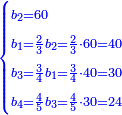









![\scriptstyle\sum_{i=1}^n i=\left[\frac{1}{2}\sdot\left(n+1\right)\right]\sdot n](/mediawiki/images/math/a/6/e/a6ece35f0333af01f991a7f9053637c7.png)
![\scriptstyle{\color{blue}{\sum_{i=1}^7 i=\left[\frac{1}{2}\sdot\left(7+1\right)\right]\sdot7=4\sdot7=28}}](/mediawiki/images/math/a/7/c/a7cd0bfcbccb015720bd6dde810dd809.png)













 liṭra
liṭra



 pešuṭim a month
pešuṭim a month
 liṭra
liṭra liṭra
liṭra liṭra
liṭra liṭra
liṭra liṭra
liṭra liṭra
liṭra
 days
days days
days days
days days
days
 days for the one zahuv
days for the one zahuv
 hours
hours days for the one zahuv
days for the one zahuv
 hours
hours days for the one zahuv
days for the one zahuv



![\scriptstyle{\color{blue}{\left[2+\left(\frac{1}{2}\sdot\frac{1}{6}\right)\right]\sdot60=125}}](/mediawiki/images/math/f/e/e/feee1688775c37c50f8c73a0ca686bf5.png)
![\scriptstyle{\color{blue}{\left[2+\left(\frac{1}{2}\sdot\frac{1}{6}\right)\right]\sdot12=12+13}}](/mediawiki/images/math/c/8/4/c84d44d55e4f0aecc61dd6b809638c69.png)





![\scriptstyle{\color{blue}{\begin{align}\scriptstyle\left(\frac{1}{4}\sdot30\right)+\left[\frac{1}{3}\sdot\left(\frac{1}{4}\sdot40\right)\right]&\scriptstyle=\left(7+\frac{1}{2}\right)+\left(\frac{1}{3}\sdot10\right)\\&\scriptstyle=\left(7+\frac{3}{6}\right)+\left(3+\frac{2}{6}\right)\\\end{align}}}](/mediawiki/images/math/4/5/3/4537046a58f32e3b94d180dd59d7ef1e.png)
 pešuṭim
pešuṭim![\scriptstyle{\color{blue}{\left(\frac{1}{4}\sdot30\right)+\left[\frac{1}{3}\sdot\left(\frac{1}{4}\sdot40\right)\right]+\left[\frac{1}{2}\sdot\left(\frac{1}{3}\sdot60\right)\right]}}](/mediawiki/images/math/5/b/0/5b099674ca5e2729573f5d9cd9f7c8e7.png)
 pešuṭim
pešuṭim![\scriptstyle{\color{blue}{\left(\frac{1}{4}\sdot30\right)+\left[\frac{1}{3}\sdot\left(\frac{1}{4}\sdot40\right)\right]+\left[\frac{1}{2}\sdot\left(\frac{1}{3}\sdot60\right)\right]+\left(\frac{1}{2}\sdot120\right)}}](/mediawiki/images/math/7/f/3/7f3e023ec38c65b5d4bf69504b050e8c.png) ]
] pešuṭim
pešuṭim







![\scriptstyle\scriptstyle{\color{blue}{\left[\frac{1}{2}\sdot\left(\rm{length_1+length_2}\right)\right]\sdot\left[\frac{1}{2}\sdot\left(\rm{breadth_1+breadth_2}\right)\right]}}](/mediawiki/images/math/a/6/f/a6f6de8bcbf800e82de4a0c1d97fce82.png)
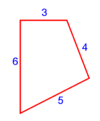
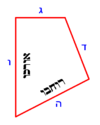
![\scriptstyle{\color{blue}{\left[\frac{1}{2}\sdot\left(4+6\right)\right]\sdot\left[\frac{1}{2}\sdot\left(5+3\right)\right]=\left(\frac{1}{2}\sdot10\right)\sdot\left(\frac{1}{2}\sdot8\right)=5\sdot4=20}}](/mediawiki/images/math/6/b/e/6be403d9d0da87e677138195512e3aaa.png)
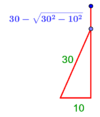





![\scriptstyle{\color{blue}{\sqrt{\left(38+\frac{1}{2}\right)\sdot\left[4\sdot\left(3+\frac{1}{7}\right)\right]}=\sqrt{\left(38+\frac{1}{2}\right)\sdot\left(12+\frac{4}{7}\right)}=\sqrt{484}=22}}](/mediawiki/images/math/7/b/7/7b7dca044063af8f374417378f76a6a1.png)



![\scriptstyle\rm{Surface_{sphere}}\sdot\left[\frac{1}{6}\sdot\left(2r\right)\right]](/mediawiki/images/math/d/5/0/d50944f49cbc915457f480b85f6a5270.png)



![\scriptstyle{\color{blue}{\left[7\sdot\left(3+\frac{1}{2}\right)\right]\sdot\left(3+\frac{1}{7}\right)=77}}](/mediawiki/images/math/7/4/5/7457b23543f85dd128179a780b2b2382.png)
![\scriptstyle{\color{blue}{77\sdot\left[\frac{1}{6}\sdot\left(2r\right)\right]=90-\frac{1}{6}}}](/mediawiki/images/math/4/d/2/4d2d28f827869eea6319d87dc150ff02.png)


![\scriptstyle{\color{blue}{44\sdot\left[\frac{1}{6}\sdot\left(2r\right)\right]=44\sdot\left(1+\frac{1}{6}\right)=51+\frac{1}{3}}}](/mediawiki/images/math/4/c/c/4cc6a351ee80703dd6fdbd7965782c9e.png)

![\scriptstyle{\color{blue}{110\sdot\left[\frac{1}{6}\sdot\left(2r\right)\right]=128+\frac{1}{3}}}](/mediawiki/images/math/1/b/d/1bd0a32a24afbf4ad5cbbfff01b1a358.png)






![\scriptstyle{\color{blue}{1400-\left[\left[\frac{1}{7}+\left(\frac{1}{2}\sdot\frac{1}{7}\right)\right]\sdot1400\right]=1400-300=1100}}](/mediawiki/images/math/9/6/8/968c893b6e831904d39545b4738b1cda.png)
![\scriptstyle{\color{blue}{100-\left[\left[\frac{1}{7}+\left(\frac{1}{2}\sdot\frac{1}{7}\right)\right]\sdot100\right]=100-\left(21+\frac{3}{7}\right)=78+\frac{4}{7}}}](/mediawiki/images/math/f/1/8/f18ddd8d864724be886adef0829db8d2.png)



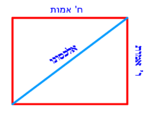
![\scriptstyle{\color{blue}{\sqrt{\left[2\sdot\left(8\sdot6\right)\right]+\left(8-6\right)^2}=\sqrt{\left(2\sdot48\right)+2^2}=\sqrt{96+2^2}=\sqrt{100}=10}}](/mediawiki/images/math/b/a/6/ba6094813180dc06f481c47295a2e833.png)

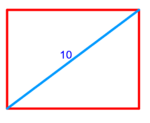
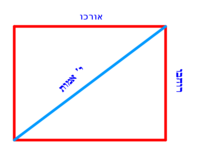
![\scriptstyle{\color{blue}{\frac{1}{2}\sdot\left[diagonal^2-\left(side_1-side_2\right)^2\right]=\frac{1}{2}\sdot\left(10^2-2^2\right)=\frac{1}{2}\sdot\left(100-4\right)=\frac{1}{2}\sdot96=48}}](/mediawiki/images/math/a/d/9/ad9a0fe0dcb662818d3ab0d7c95a9c00.png)














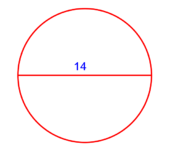
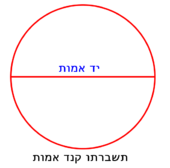


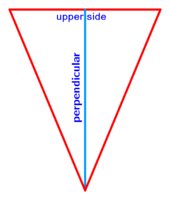





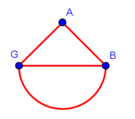
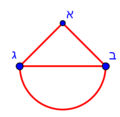


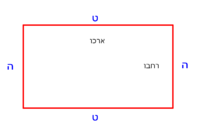






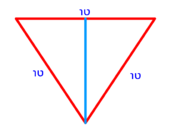





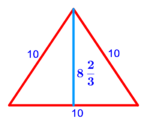




![\scriptstyle\sqrt{\rm{height}^2+\left[\frac{1}{3}\sdot\left(\rm{height}^2\right)\right]}](/mediawiki/images/math/d/a/9/da9f17b590a4a6d0ecc402b8e08594fb.png)
![\scriptstyle{\color{blue}{\sqrt{13^2+\left[\frac{1}{3}\sdot\left(13^2\right)\right]}=\sqrt{169+\left(\frac{1}{3}\sdot169\right)}=\sqrt{169+\left(56+\frac{1}{3}\right)}=\sqrt{225+\frac{1}{3}}\approx15}}](/mediawiki/images/math/1/b/e/1be4eaaa35521be3c6f64424d6b16ded.png)


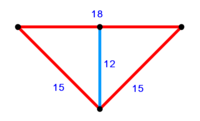






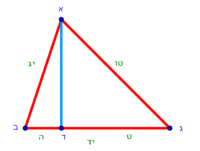

![\scriptstyle{\color{blue}{\begin{align}\scriptstyle\frac{\frac{1}{2}\sdot\left[\left(AG^2+BG^2\right)-AB^2\right]}{BG}&\scriptstyle=\frac{\frac{1}{2}\sdot\left[\left(15^2+14^2\right)-13^2\right]}{14}=\frac{\frac{1}{2}\sdot\left[\left(225+196\right)-169\right]}{14}=\frac{\frac{1}{2}\sdot\left(421-169\right)}{14}\\&\scriptstyle=\frac{\frac{1}{2}\sdot252}{14}=\frac{126}{14}=9\\\end{align}}}](/mediawiki/images/math/3/9/b/39bf1d911e6e3d0c22577ed996e7967e.png)
![\scriptstyle{\color{blue}{\begin{align}\scriptstyle\frac{\frac{1}{2}\sdot\left[\left(AB^2+BG^2\right)-AG^2\right]}{BG}&\scriptstyle=\frac{\frac{1}{2}\sdot\left[\left(13^2+14^2\right)-15^2\right]}{14}=\frac{\frac{1}{2}\sdot\left[\left(169+196\right)-225\right]}{14}=\frac{\frac{1}{2}\sdot\left(365-225\right)}{14}\\&\scriptstyle=\frac{\frac{1}{2}\sdot140}{14}=\frac{70}{14}=5\\\end{align}}}](/mediawiki/images/math/e/b/f/ebffa7c5aa53ccfd67e5875218757ecd.png)







 the area of the square
the area of the square












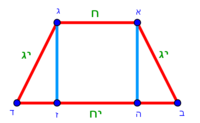
![\scriptstyle\sqrt{\rm{side}^2-\left[\frac{1}{2}\sdot\left[\left(\rm{bottom\ base}\right)-\left(\rm{top\ base}\right)\right]\right]^2}](/mediawiki/images/math/f/a/7/fa79ec14da0c8b6c023cc596e9409532.png)
![\scriptstyle{\color{blue}{\begin{align}\scriptstyle AH&\scriptstyle=\sqrt{AB^2-\left[\frac{1}{2}\sdot\left(BD-AG\right)\right]^2}=\sqrt{13^2-\left[\frac{1}{2}\sdot\left(18-8\right)\right]^2}=\sqrt{169-\left(\frac{1}{2}\sdot10\right)^2}\\&\scriptstyle=\sqrt{169-5^2}=\sqrt{169-25}=\sqrt{144}=12\\\end{align}}}](/mediawiki/images/math/f/2/3/f234251db56850fb612e1a426a4c951a.png)
![\scriptstyle{\color{blue}{\left[\frac{1}{2}\sdot\left[\left(\rm{top\ base}\right)+\left(\rm{bottom\ base}\right)\right]\right]\sdot\rm{height}=\left[\frac{1}{2}\sdot\left(8+18\right)\right]\sdot12=\left[\frac{1}{2}\sdot26\right]\sdot12=13\sdot12=156}}](/mediawiki/images/math/5/0/3/5033eadfa8549281eb10a01ea7c7baee.png)
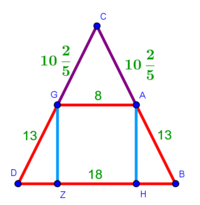
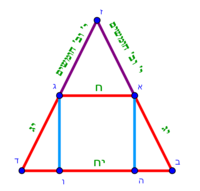

![\scriptstyle{\color{blue}{\begin{align}\scriptstyle AC:13=AC:BC=GC:13&\scriptstyle=GC:DC=AG:\left(BD-AG\right)\\&\scriptstyle=\left(\rm{top\ base}\right):\left[\left(\rm{bottom\ base}\right)-\left(\rm{top\ base}\right)\right]\\&\scriptstyle=8:\left(18-8\right)=8:10=\frac{4}{5}=1-\frac{1}{5}\\\end{align}}}](/mediawiki/images/math/4/f/8/4f83ed3bf776608f76bba92431cf41cd.png)

![\scriptstyle\rm{height}\sdot\left[\frac{1}{2}\sdot\left[\left(\rm{top\ base}\right)+\left(\rm{bottom\ base}\right)\right]\right]](/mediawiki/images/math/6/c/3/6c31d09bf13a073d27697d1ebcb8b1da.png)

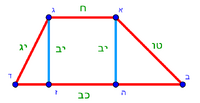
![\scriptstyle{\color{blue}{12\sdot\left[\frac{1}{2}\sdot\left(8+22\right)\right]=12\sdot\left(\frac{1}{2}\sdot30\right)=12\sdot15=180}}](/mediawiki/images/math/d/6/d/d6d1aad37c46030ca055b78ae6edd836.png)


![\scriptstyle height\sdot\left[\frac{1}{2}\sdot\left[\left(top\ base\right)+\left(bottom\ base\right)\right]\right]](/mediawiki/images/math/a/d/4/ad4036287b09712197b5fa29c83c9b90.png)
![\scriptstyle{\color{blue}{9\sdot\left[\frac{1}{2}\sdot\left(8+20\right)\right]=9\sdot\left(\frac{1}{2}\sdot28\right)=9\sdot14=126}}](/mediawiki/images/math/6/8/b/68b1007c14e93b43f21b6fecffbb9f64.png)


![\scriptstyle{\color{blue}{12\sdot\left[\frac{1}{2}\sdot\left(14+21\right)\right]=12\sdot\left(17+\frac{1}{2}\right)=210}}](/mediawiki/images/math/5/0/f/50f1b9c85f19e17260ef8843108adc68.png)
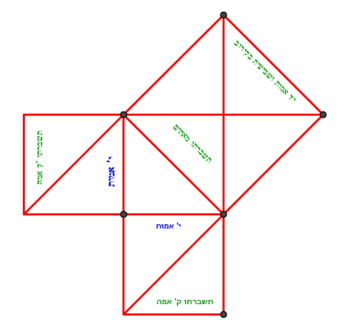



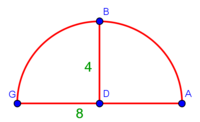
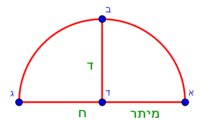
![\scriptstyle{\color{blue}{4\sdot\left[\frac{1}{2}\sdot\left(12+\frac{4}{7}\right)\right]=4\sdot\left(6+\frac{2}{7}\right)=25+\frac{1}{7}}}](/mediawiki/images/math/7/6/4/764622b2cd768983aec6d8c70c988879.png)
![\scriptstyle\frac{1}{2}\sdot\left[\left(2r\right)^2-\left[\left[\frac{1}{7}+\left(\frac{1}{2}\sdot\frac{1}{7}\right)\right]\sdot\left(2r\right)^2\right]\right]](/mediawiki/images/math/1/1/c/11ca29ad6d2f4f5378f2c7aa1bc92984.png)
![\scriptstyle{\color{blue}{\begin{align}\scriptstyle\frac{1}{2}\sdot\left[8^2-\left[\left[\frac{1}{7}+\left(\frac{1}{2}\sdot\frac{1}{7}\right)\right]\sdot8^2\right]\right]&\scriptstyle=\frac{1}{2}\sdot\left[64-\left[\left[\frac{1}{7}+\left(\frac{1}{2}\sdot\frac{1}{7}\right)\right]\sdot64\right]\right]=\frac{1}{2}\sdot\left[64-\left(13+\frac{5}{7}\right)\right]\\&\scriptstyle=\frac{1}{2}\sdot\left(50+\frac{2}{7}\right)=25+\frac{1}{7}\\\end{align}}}](/mediawiki/images/math/b/9/a/b9a4238e71f7081b6fab96916d3c3a15.png)




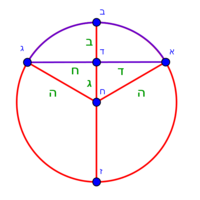

![\scriptstyle{\color{blue}{AG_{sector}-AHG_{\triangle}=AH\sdot\left(\frac{1}{2}\sdot AG_{arc}\right)-AHG_{\triangle}=\left[r\sdot\left(\frac{1}{2}\sdot AG_{arc}\right)\right]-AHG_{\triangle}}}](/mediawiki/images/math/4/1/7/417e091c03d5b9919c8eeb36ddb8e27b.png)
![\scriptstyle\left[\left[\frac{1}{2}\sdot\left(2r\right)\right]\sdot\left(\frac{1}{2}\sdot\rm{arc}\right)\right]-\left[\left[\left[\frac{1}{2}\sdot\left(2r\right)\right]-\rm{versed\ sine}\right]\sdot\left(\frac{1}{2}\sdot\rm{chord}\right)\right]](/mediawiki/images/math/0/4/e/04e3f21c1a2587b3b9ab901b46a56839.png)

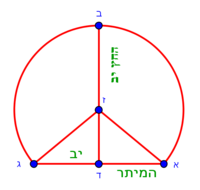
![\scriptstyle\left[\left[\frac{1}{2}\sdot\left(2r\right)\right]\sdot\left(\frac{1}{2}\sdot\rm{arc}\right)\right]+\rm{Area}_{\triangle}](/mediawiki/images/math/3/2/d/32dbc5ebfbead46f4001663ed512249b.png)



![\scriptstyle{\color{blue}{ABGDA=ABGZA+AZG=ABGZA+\left[DZ\sdot\left(\frac{1}{2}\sdot AG\right)\right]}}](/mediawiki/images/math/d/7/a/d7a5b97626d14c9dc6d3d9b48ea613a6.png)
![\scriptstyle\left[\left[\frac{1}{2}\sdot\left(2r\right)\right]\sdot\left(\frac{1}{2}\sdot\rm{arc}\right)\right]+\left[\left[\rm{versed\ sine}-\left[\frac{1}{2}\sdot\left(2r\right)\right]\right]\sdot\left(\frac{1}{2}\sdot\rm{chord}\right)\right]](/mediawiki/images/math/8/3/f/83f3c83c3f8b0aa14c2c79799914b38a.png)
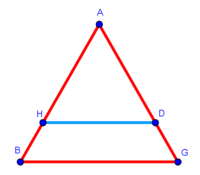
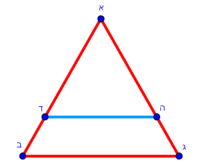


 cubits
cubits cubits
cubits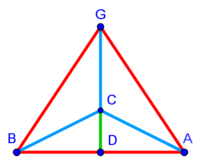
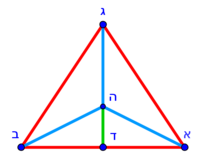







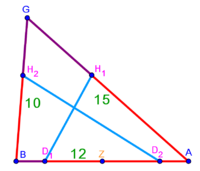
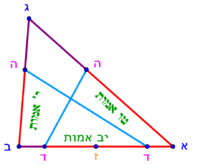
 cubits
cubits cubits
cubits cubits
cubits cubits
cubits
 cubits
cubits
 cubits
cubits
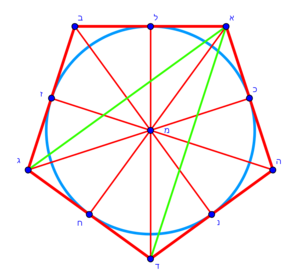
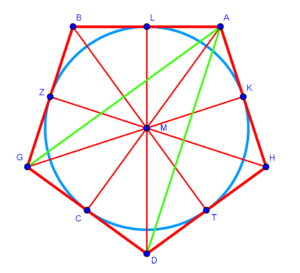



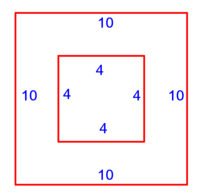

 =
=
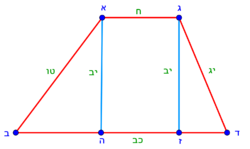

![\scriptstyle\left[\frac{1}{2}\sdot\left(\rm{base_{bottom}-base_{top}}\right)\right]+\frac{\frac{1}{2}\sdot\left(\rm{side_1^2-side_2^2}\right)}{\rm{base_{bottom}-base_{top}}}](/mediawiki/images/math/8/8/3/883dea7c97639e6df69726ce4170d17a.png)
![\scriptstyle\left[\frac{1}{2}\sdot\left(\rm{base_{bottom}-base_{top}}\right)\right]-\frac{\frac{1}{2}\sdot\left(\rm{side_1^2-side_2^2}\right)}{\rm{base_{bottom}-base_{top}}}](/mediawiki/images/math/9/f/5/9f5f7a8c00c970846ecf2bbf1bc260a7.png)
![\scriptstyle{\color{blue}{\begin{align}\scriptstyle BH &\scriptstyle=\left[\frac{1}{2}\sdot\left(BD-AG\right)\right]+\frac{\frac{1}{2}\sdot\left(AB^2-GD^2\right)}{BD-AG}=\left[\frac{1}{2}\sdot\left(22-8\right)\right]+\frac{\frac{1}{2}\sdot\left(15^2-13^2\right)}{22-8}\\&\scriptstyle=\left(\frac{1}{2}\sdot14\right)+\frac{\frac{1}{2}\sdot\left(15^2-169\right)}{14}=7+\frac{\frac{1}{2}\sdot56}{14}=7+\frac{28}{14}=7+2=9\\\end{align}}}](/mediawiki/images/math/a/7/8/a7855f2dfb8394a9f6ed7785513f77d2.png)
![\scriptstyle{\color{blue}{CD=\left[\frac{1}{2}\sdot\left(BD-AG\right)\right]-\frac{\frac{1}{2}\sdot\left(AB^2-GD^2\right)}{BD-AG}=7-2}}](/mediawiki/images/math/1/0/2/1027a9c6e067c0548a875e01e5376d46.png)
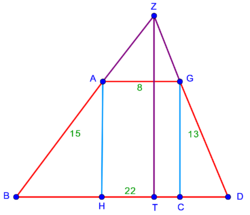

![\scriptstyle{\color{blue}{AZ=\frac{HT\sdot AB}{HB}=\frac{\left(BT-HB\right)\sdot AB}{HB}=\frac{\left[\left(14+\frac{1}{7}\right)-9\right]\sdot 15}{9}=\frac{\left(5+\frac{1}{7}\right)\sdot15}{9}=\frac{77+\frac{1}{7}}{9}=8+\frac{4}{7}}}](/mediawiki/images/math/5/a/8/5a8bdc31cf4a115ef3b3e6869789c4e0.png)


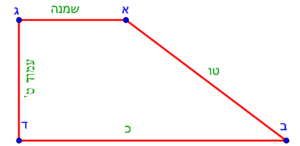
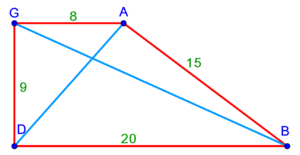
![\scriptstyle \left[\frac{1}{2}\sdot\left(\rm{base_{top}+base_{bottom}}\right)\right]\sdot\rm{height}](/mediawiki/images/math/7/4/8/748bb026a6e3c51804bb24f339b1baa0.png)
![\scriptstyle{\color{blue}{\left[\frac{1}{2}\sdot\left(8+20\right)\right]\sdot9=\left(\frac{1}{2}\sdot28\right)\sdot9=14\sdot9=126}}](/mediawiki/images/math/8/a/2/8a2be587e347ec5a64296a52ea860b9f.png)


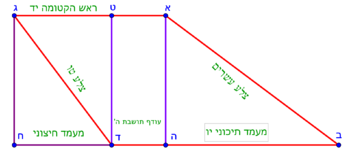
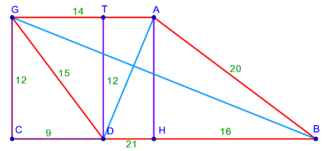
![\scriptstyle{\color{blue}{\begin{align}\scriptstyle CD &\scriptstyle=\frac{\frac{1}{2}\sdot\left[AB^2-\left[\left(BD-AG\right)^2+GD^2\right]\right]}{BD-AG}\\&\scriptstyle=\frac{\frac{1}{2}\sdot\left[20^2-\left[\left(21-14\right)^2+15^2\right]\right]}{21-14}\\&\scriptstyle=\frac{\frac{1}{2}\sdot\left[20^2-\left(7^2+15^2\right)\right]}{7}\\&\scriptstyle=\frac{\frac{1}{2}\sdot\left(400-274\right)}{7}\\&\scriptstyle=\frac{\frac{1}{2}\sdot126}{7}=\frac{63}{7}=9\\\end{align}}}](/mediawiki/images/math/d/c/b/dcbcff25f794646a5351d1e31bec1291.png)



![\scriptstyle{\color{blue}{\left[\frac{1}{2}\sdot\left(14+21\right)\right]\sdot12=210}}](/mediawiki/images/math/8/c/b/8cb8b983e66e5f5777b2663053b8e239.png)
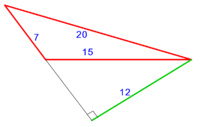


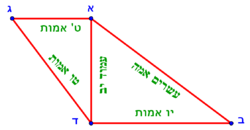
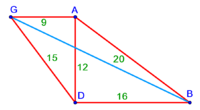


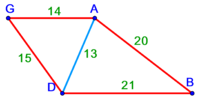

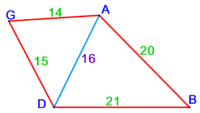
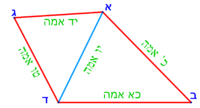



![\scriptstyle\left[\frac{1}{2}\sdot\left(\rm{height_1+height_2}\right)\right]\sdot\rm{diagonal}](/mediawiki/images/math/5/0/5/5059a1aca2699cc50f11346c74e6911c.png)

 days
days
![\scriptstyle{\color{blue}{x=\frac{1}{2}\sdot\left(10+\frac{5^2}{10}\right)=\frac{1}{2}\sdot\left(10+\frac{25}{10}\right)=\frac{1}{2}\sdot\left[10+\left(2+\frac{1}{2}\right)\right]=6+\frac{1}{4}}}](/mediawiki/images/math/2/1/f/21f4dd1709c59b361a8076494299eed2.png)
 cubits
cubits![\scriptstyle1+\left[\frac{1}{10}\sdot\left(X-1\right)\right]=2+\frac{1}{10}\sdot\left[X-\left[\left[1+\left[\frac{1}{10}\sdot\left(X-1\right)\right]\right]+2\right]\right]](/mediawiki/images/math/0/4/e/04ec9fa2f7109a05d7c4e8fa7ce5d879.png)




 cubits
cubits dinar for 12 cubits
dinar for 12 cubits
 pešuṭim
pešuṭim